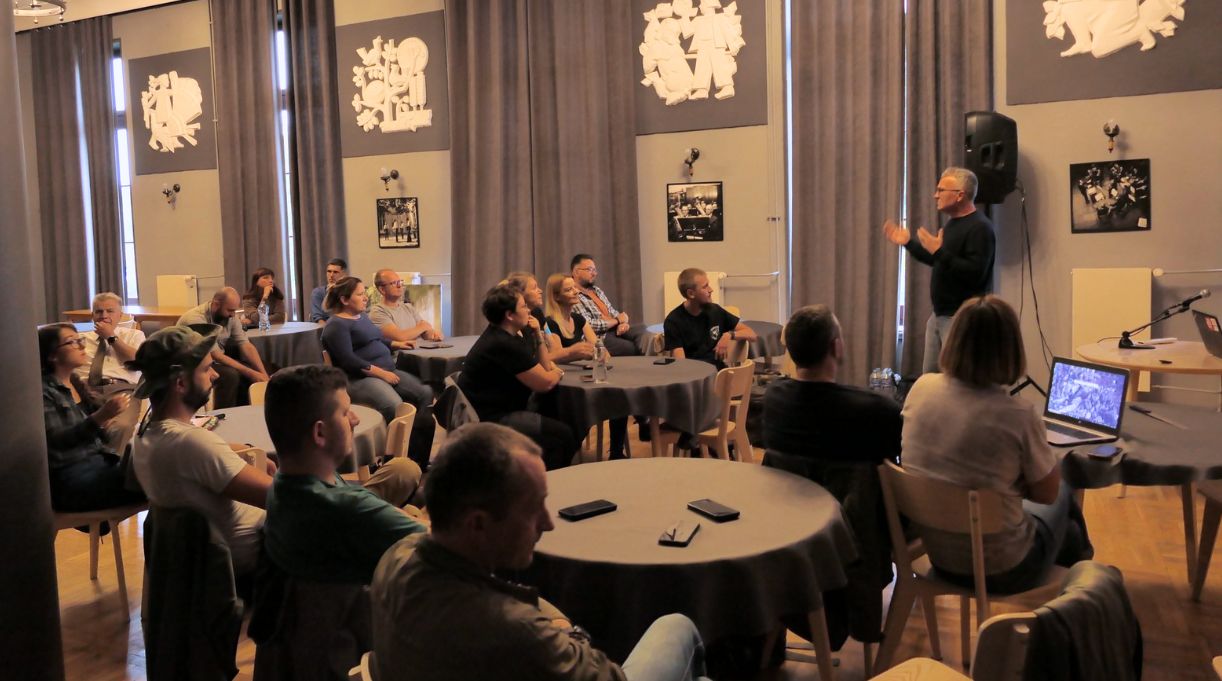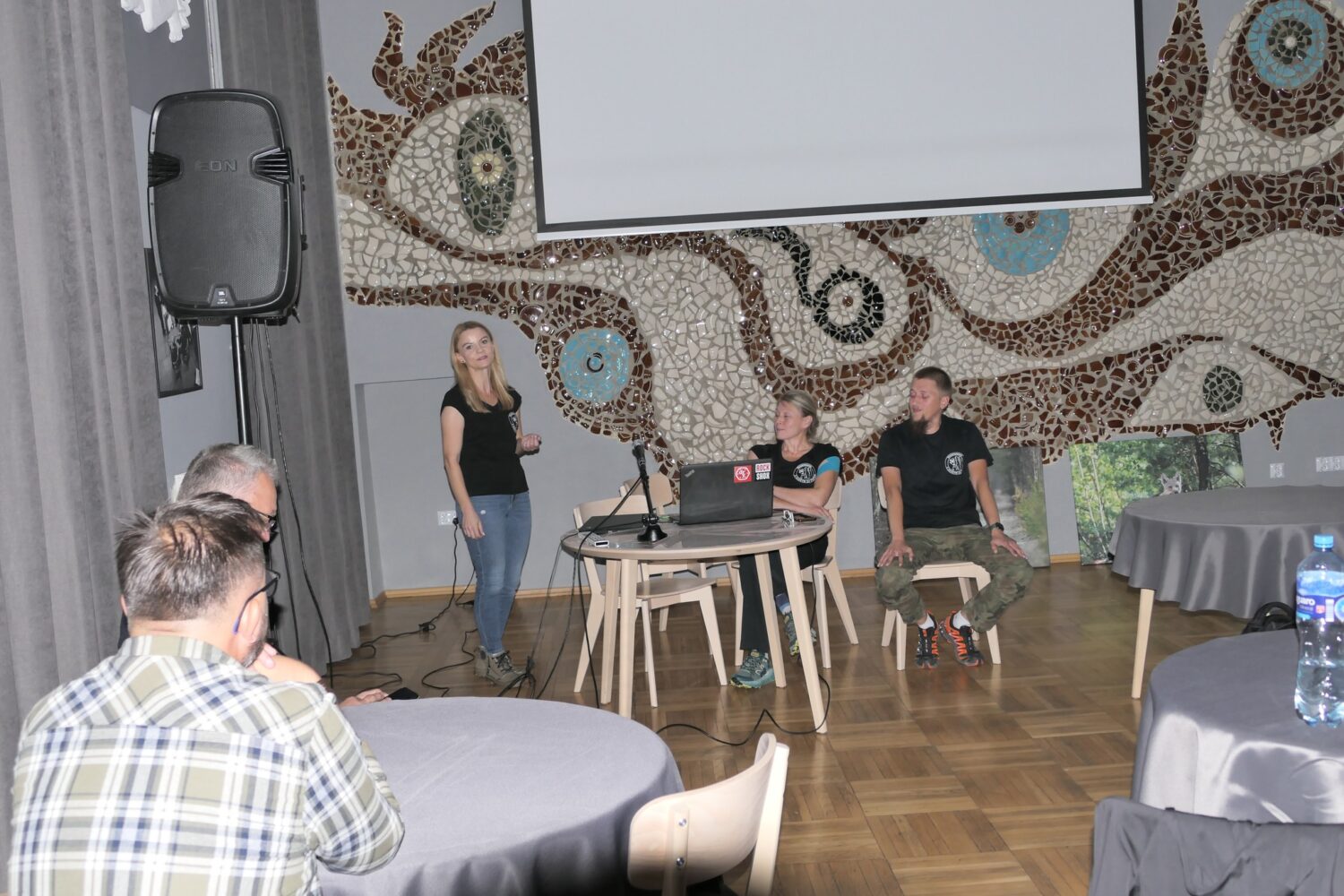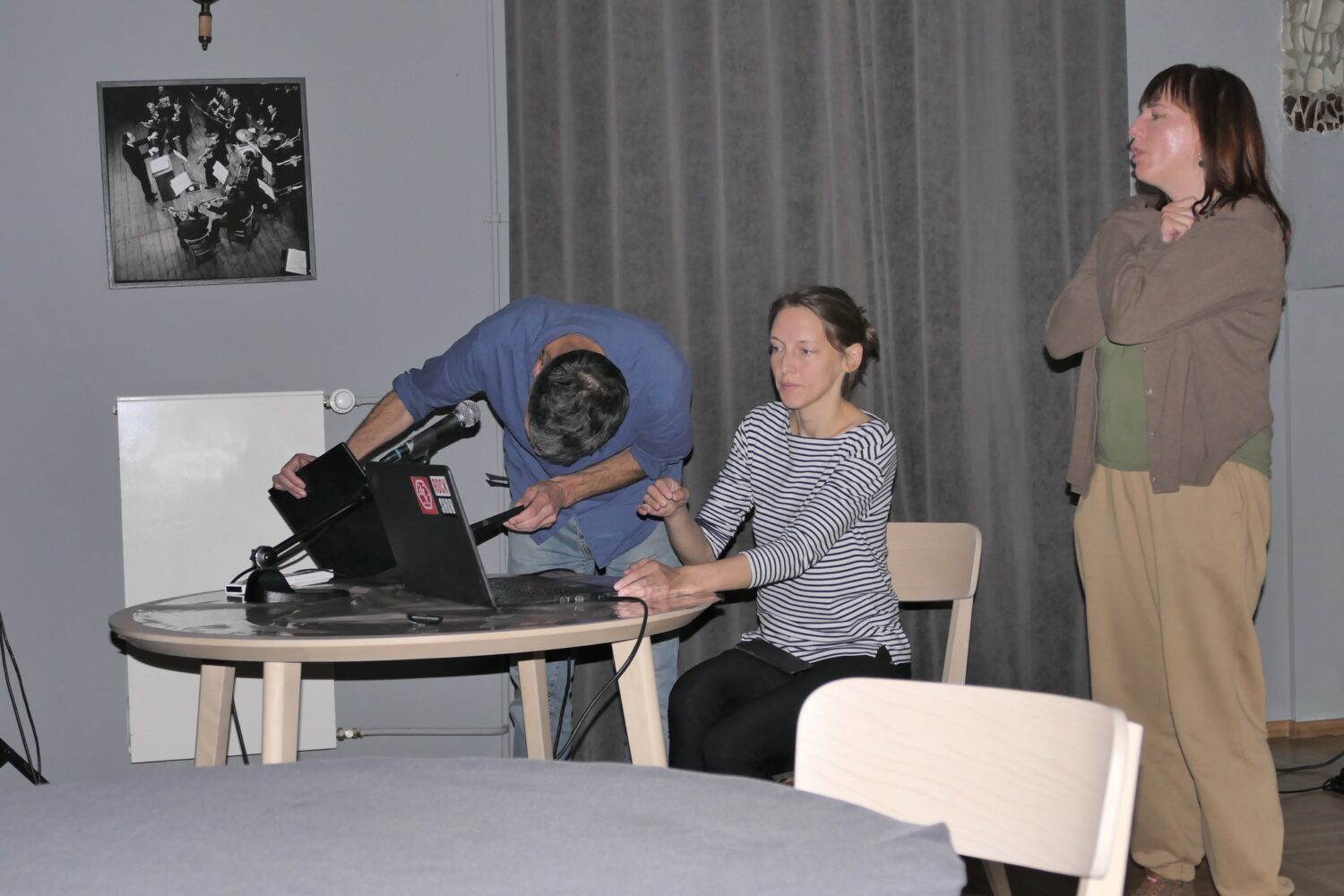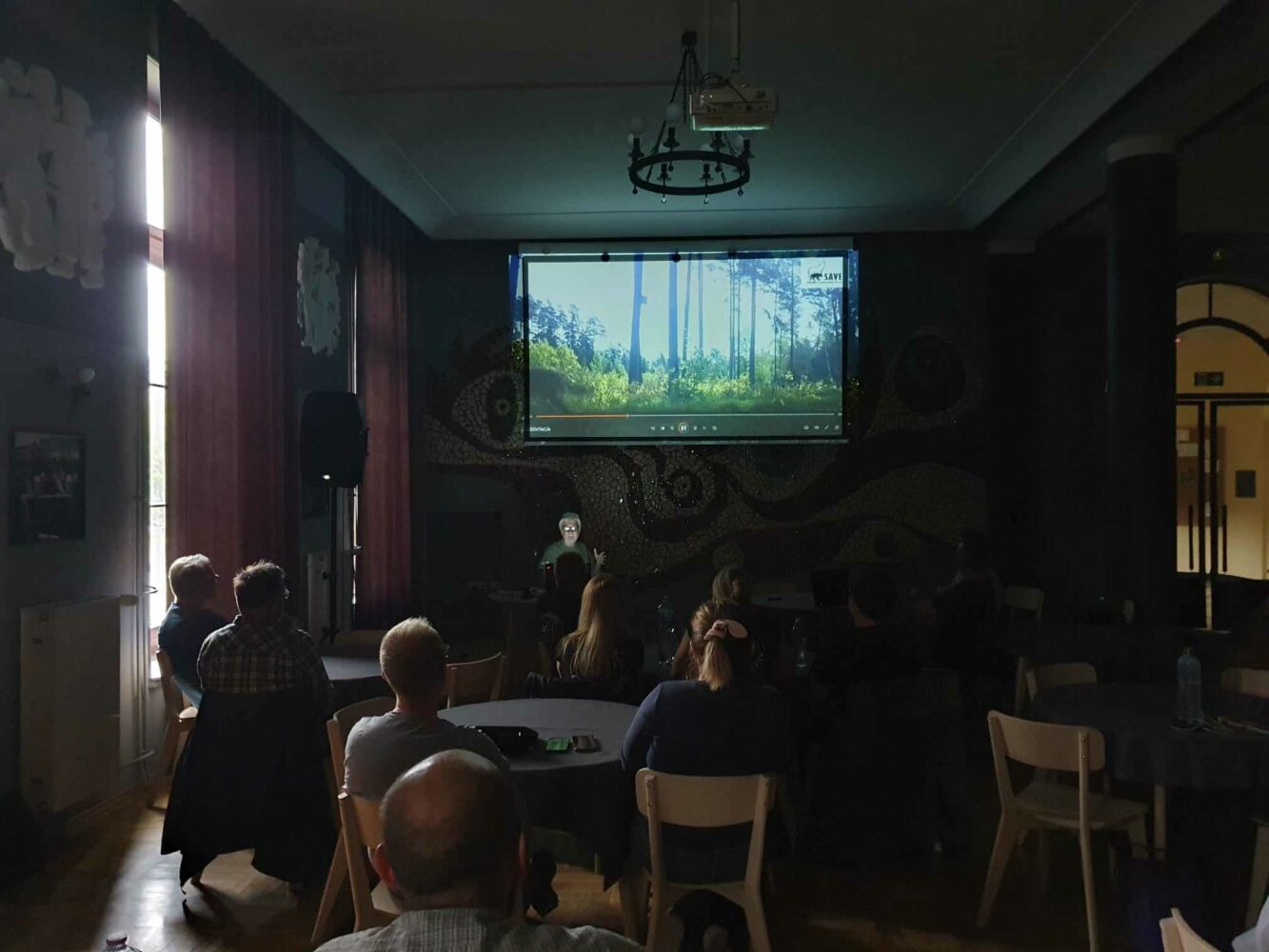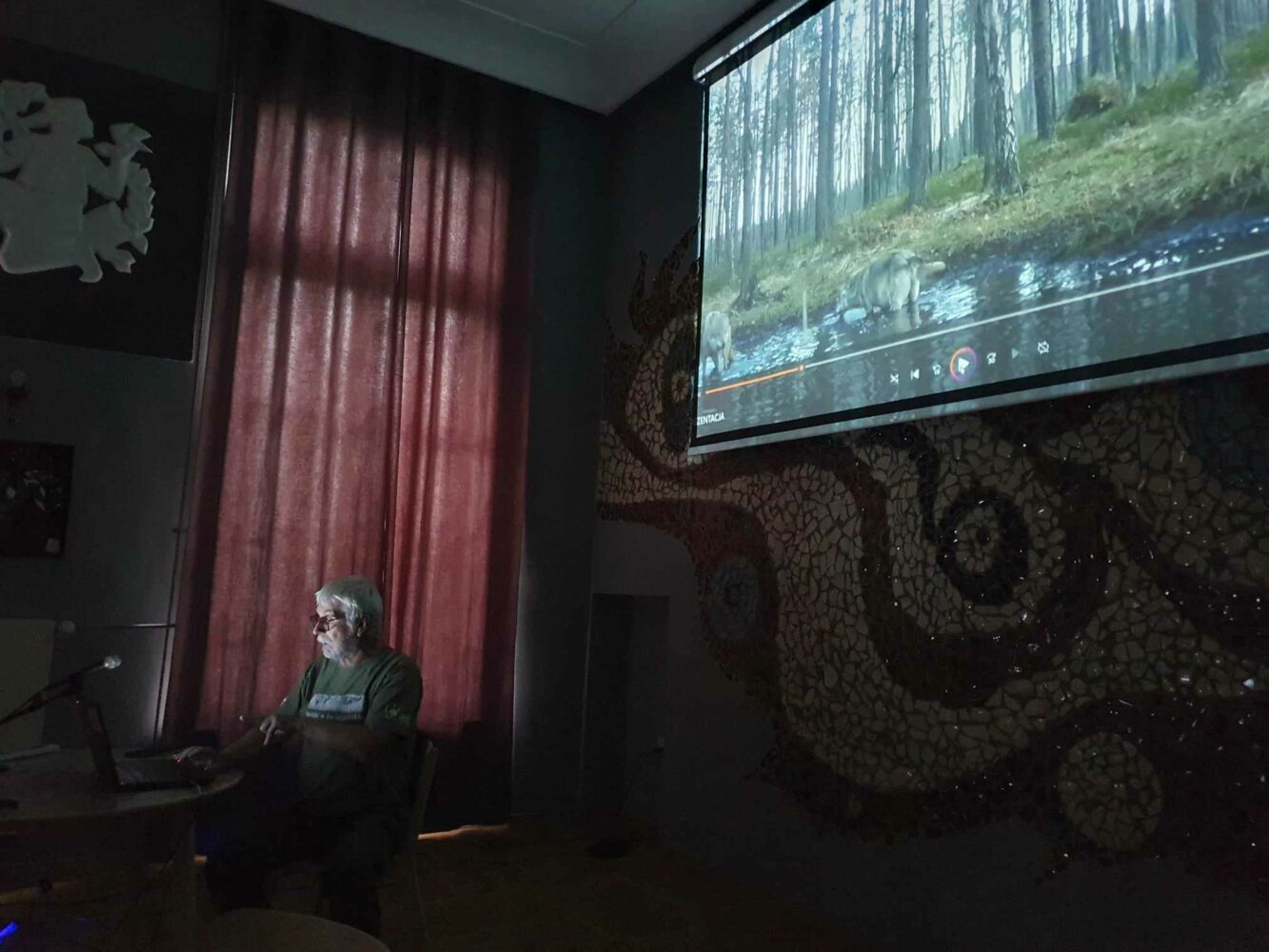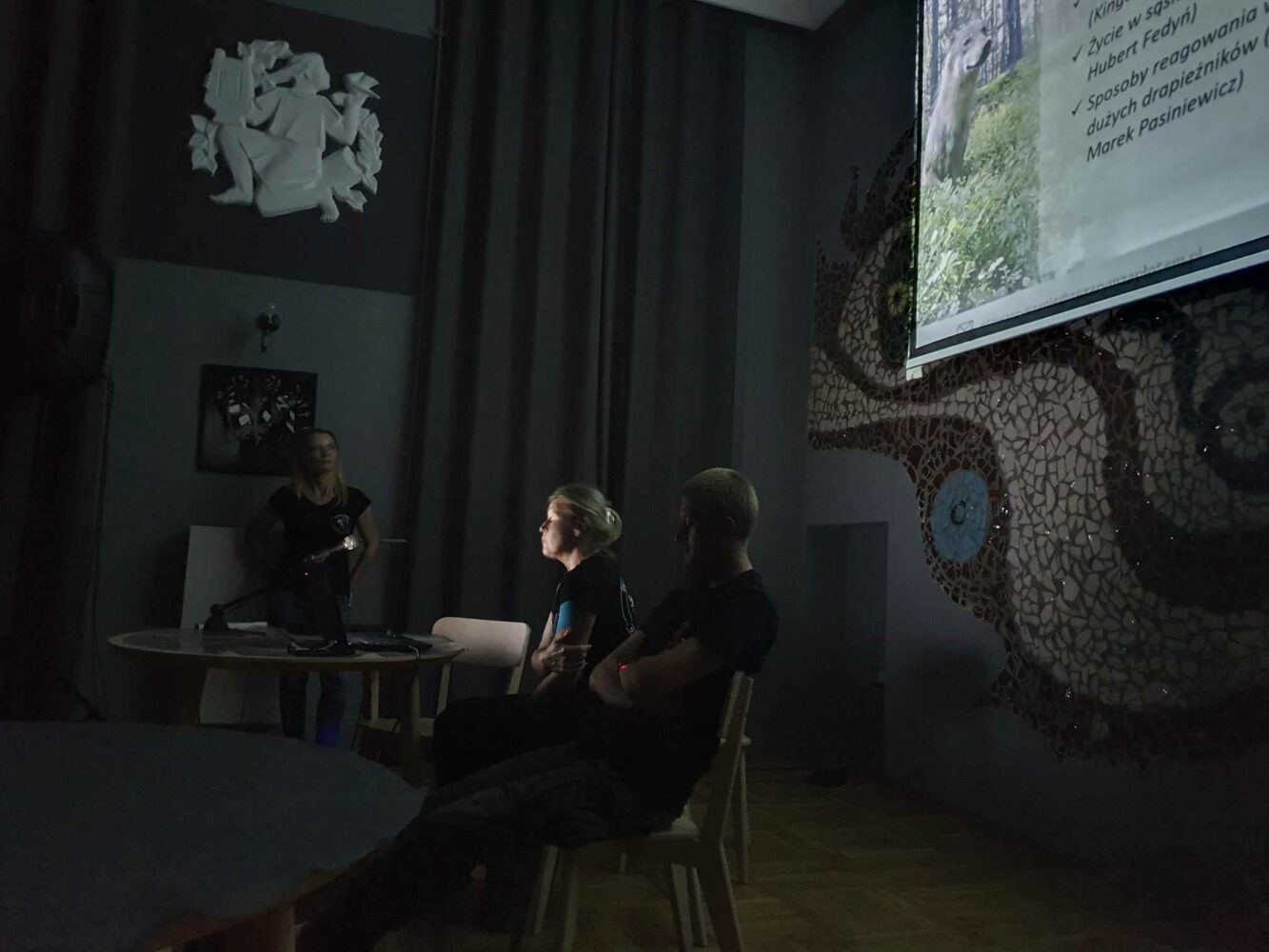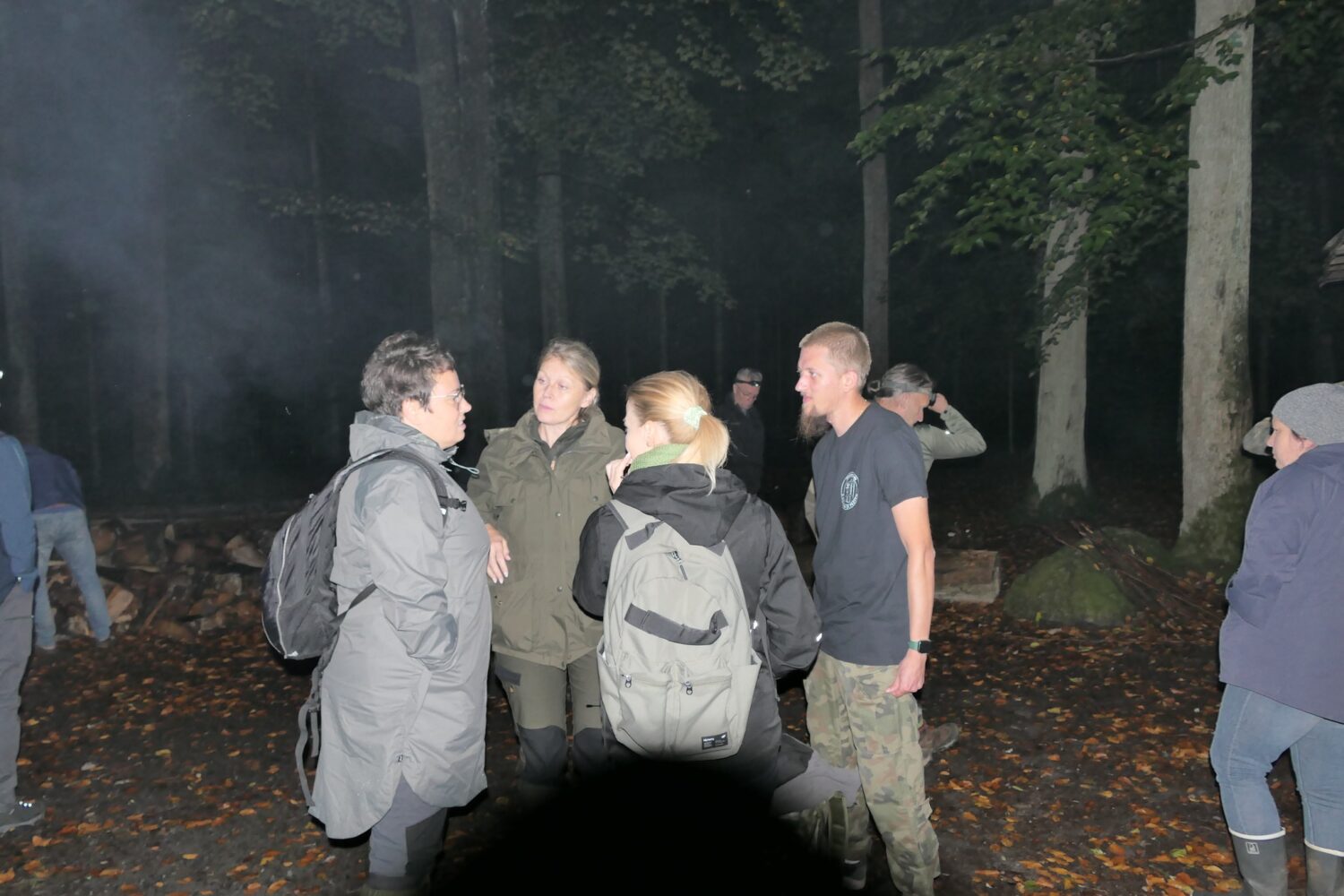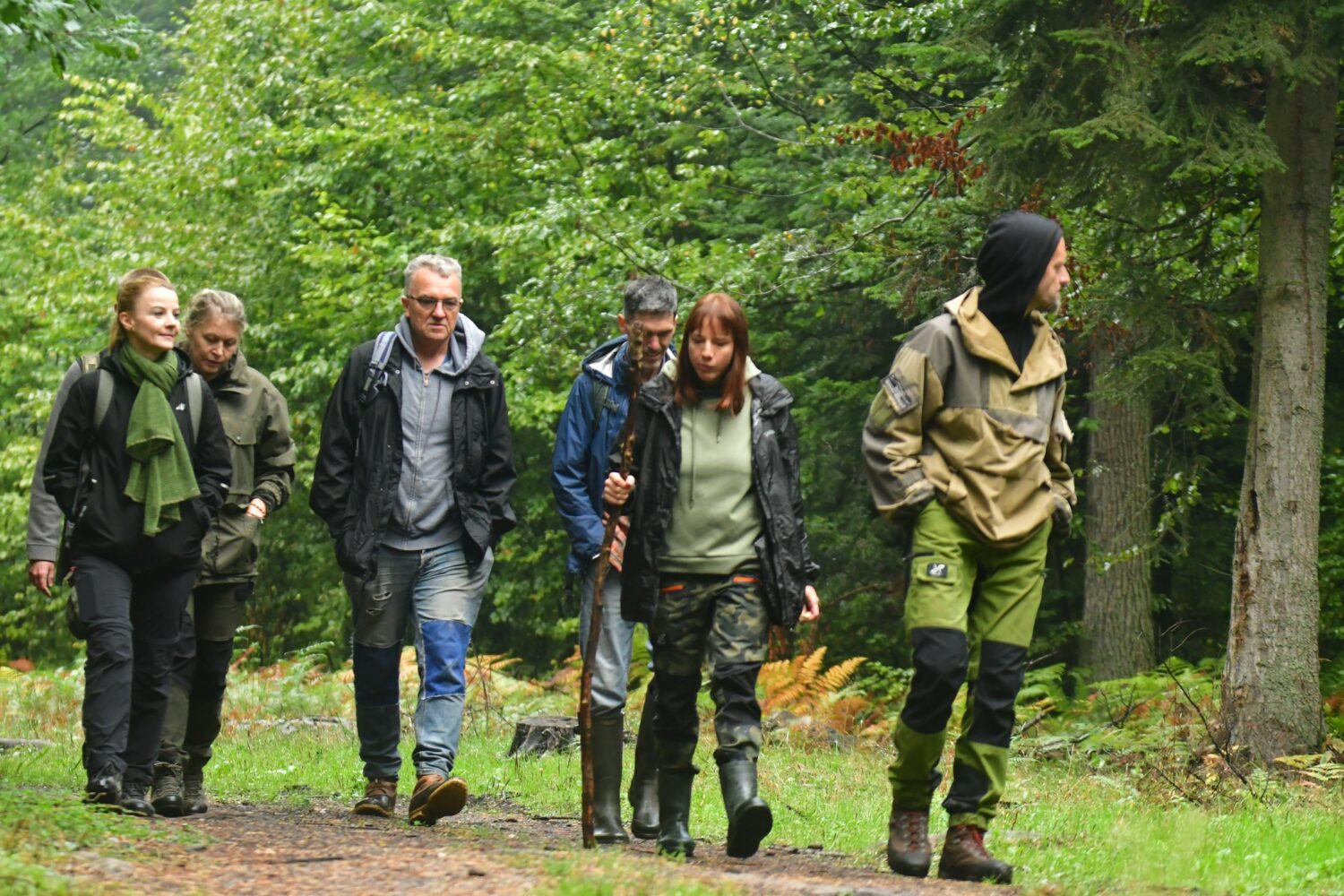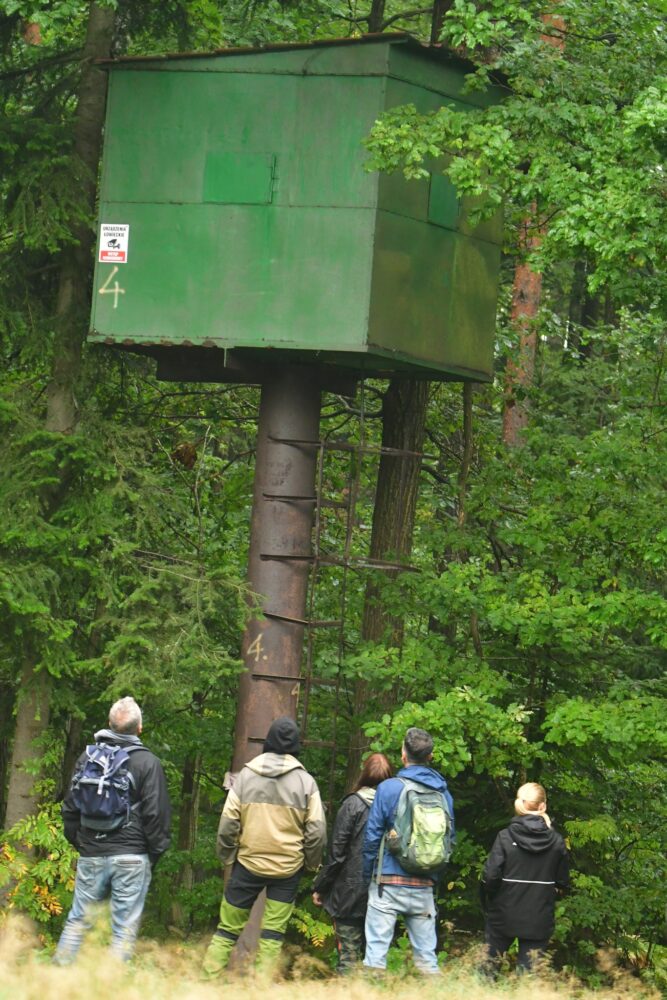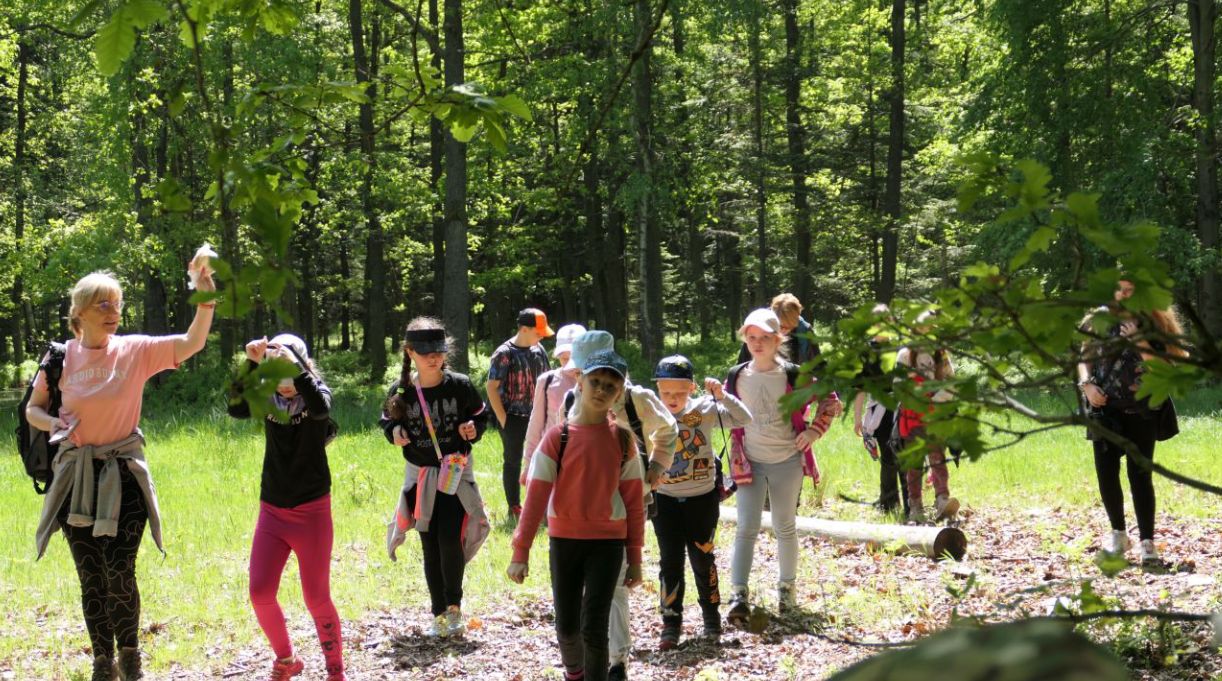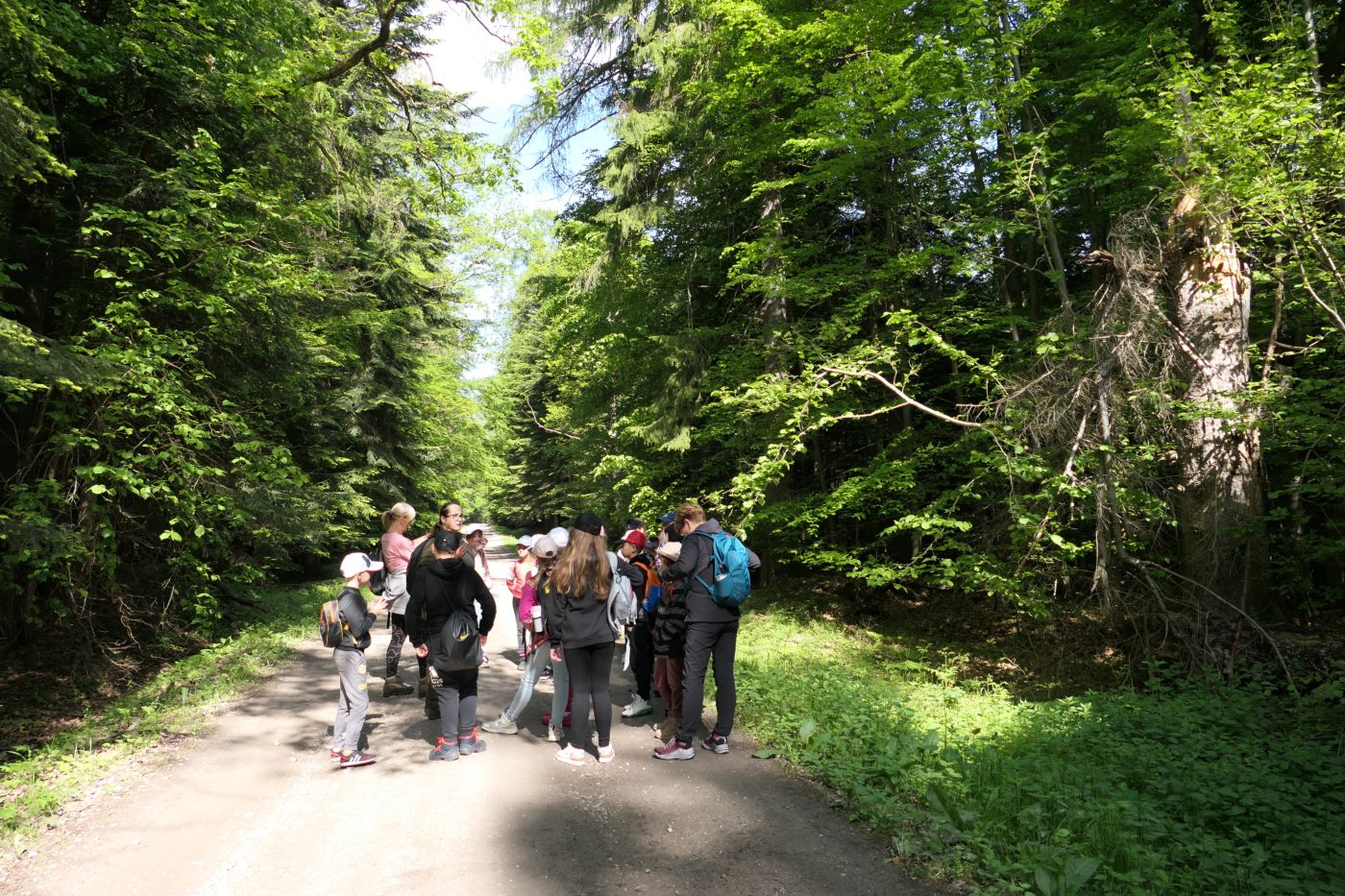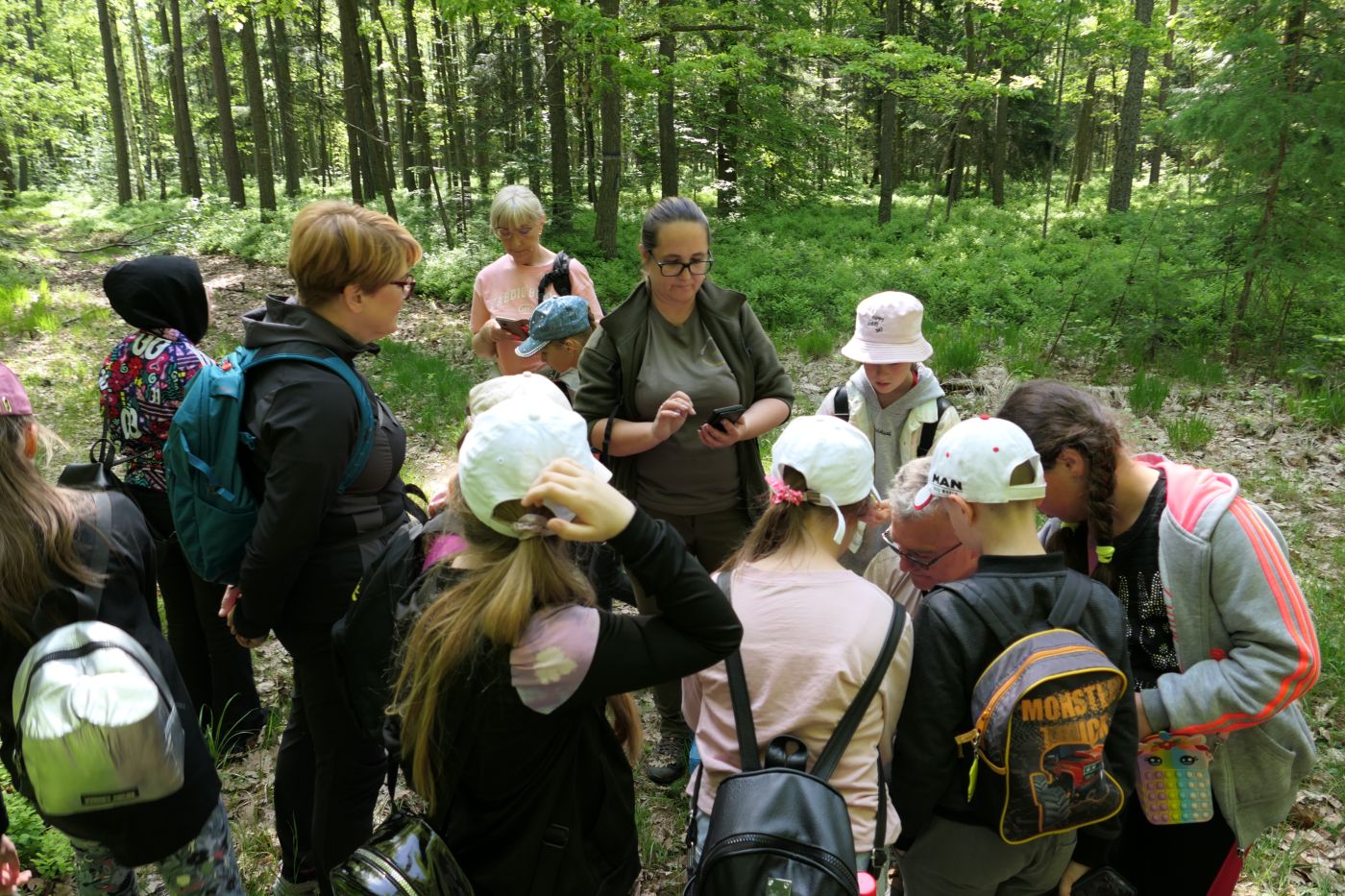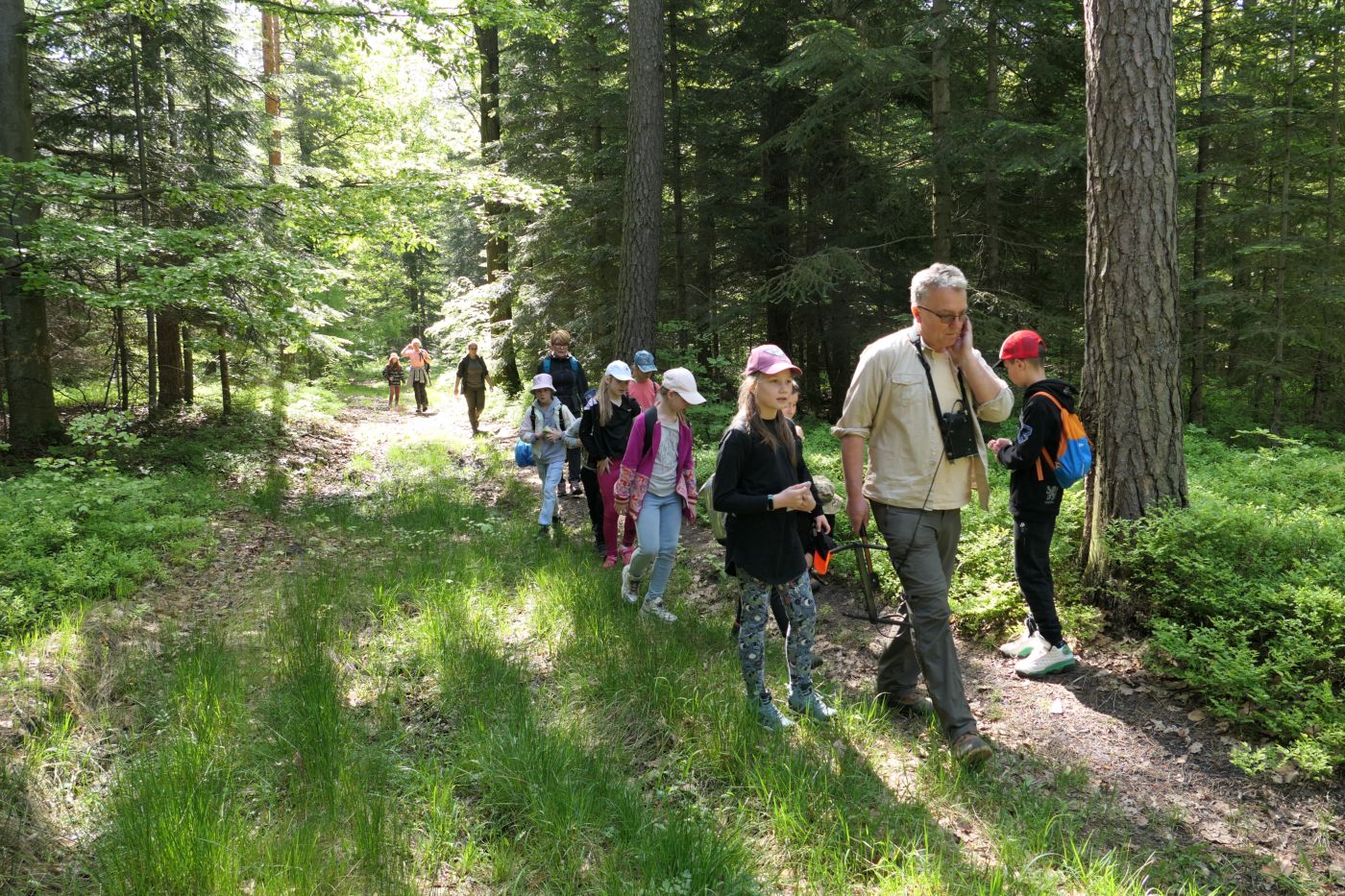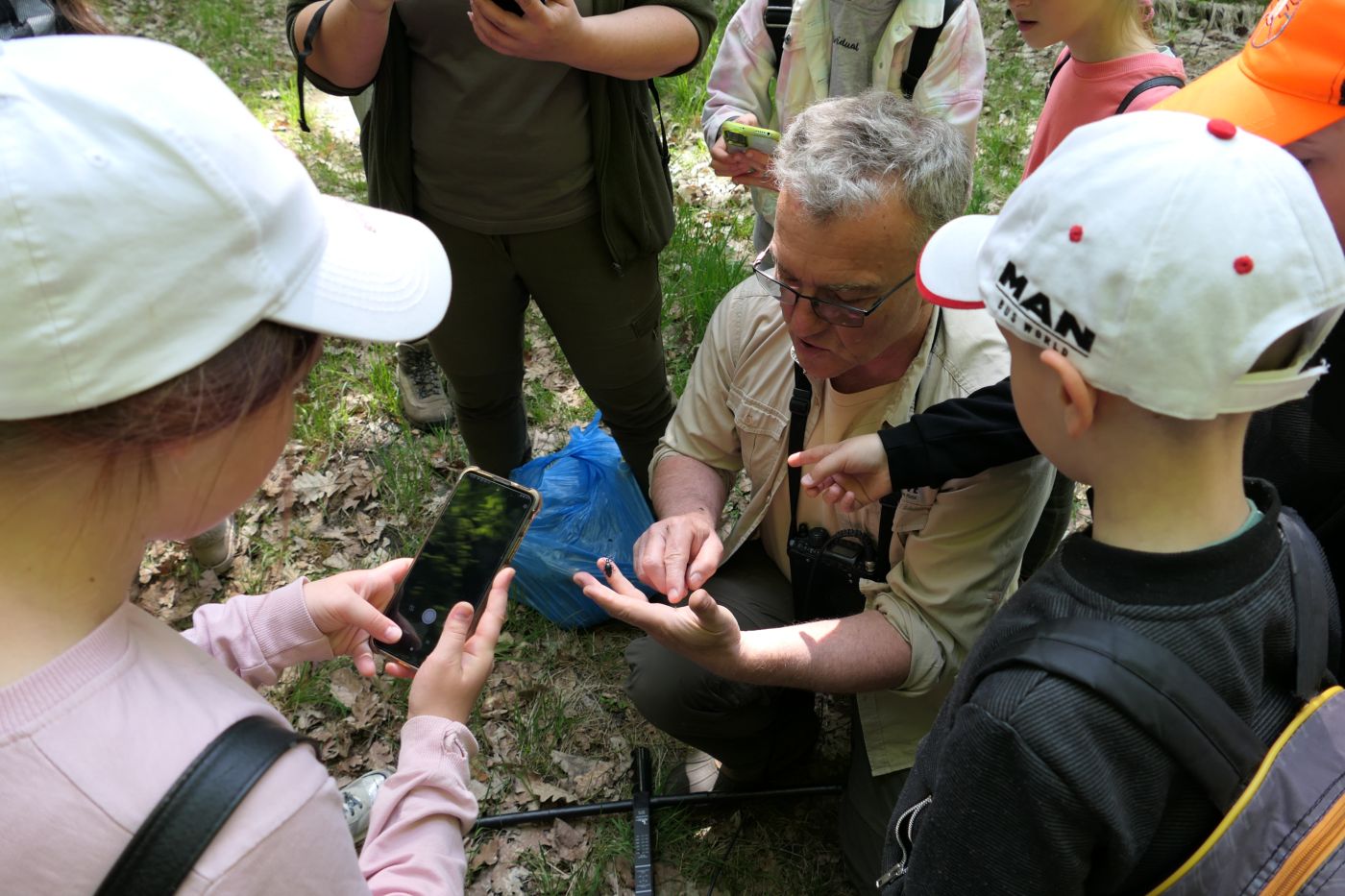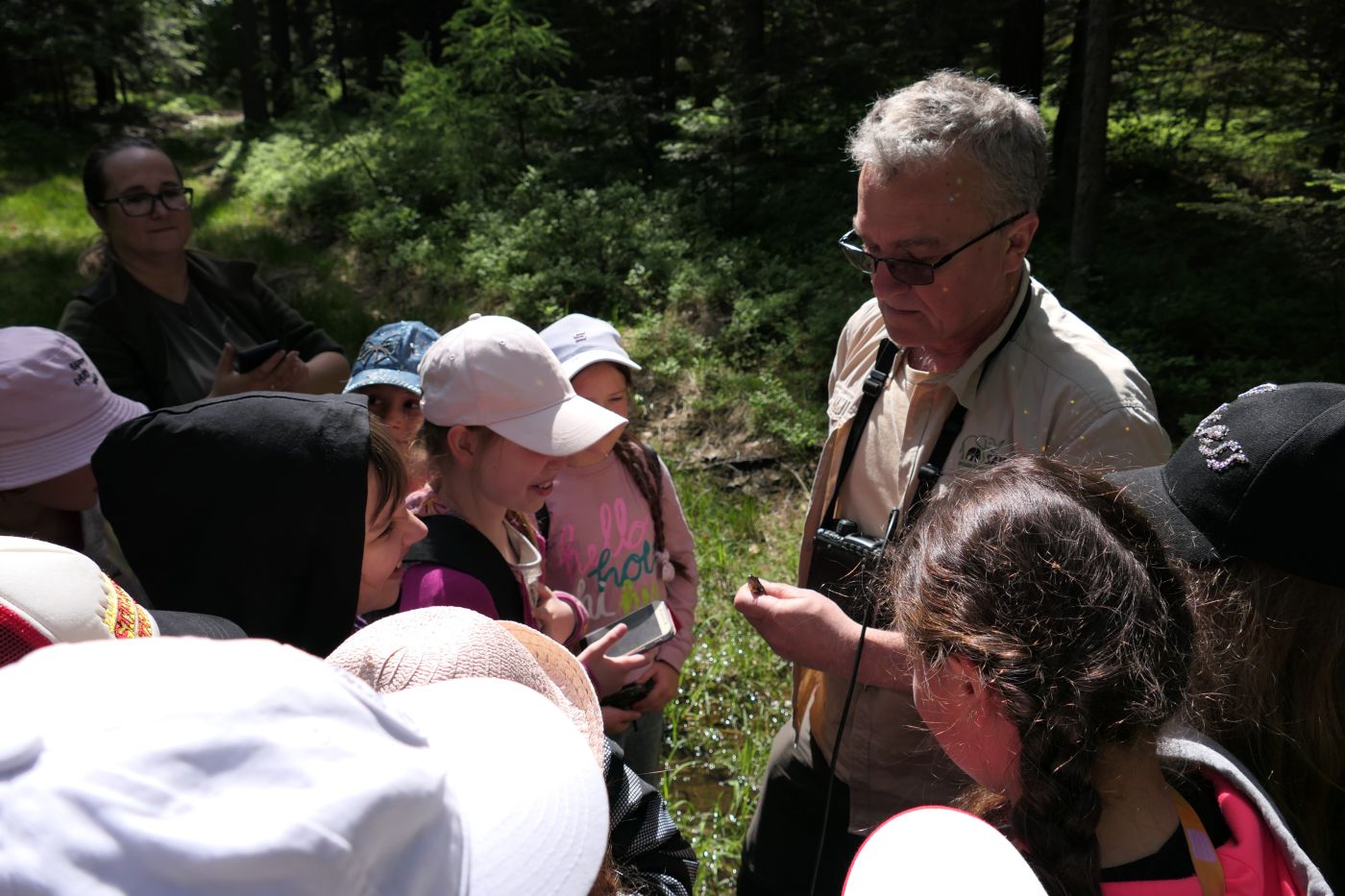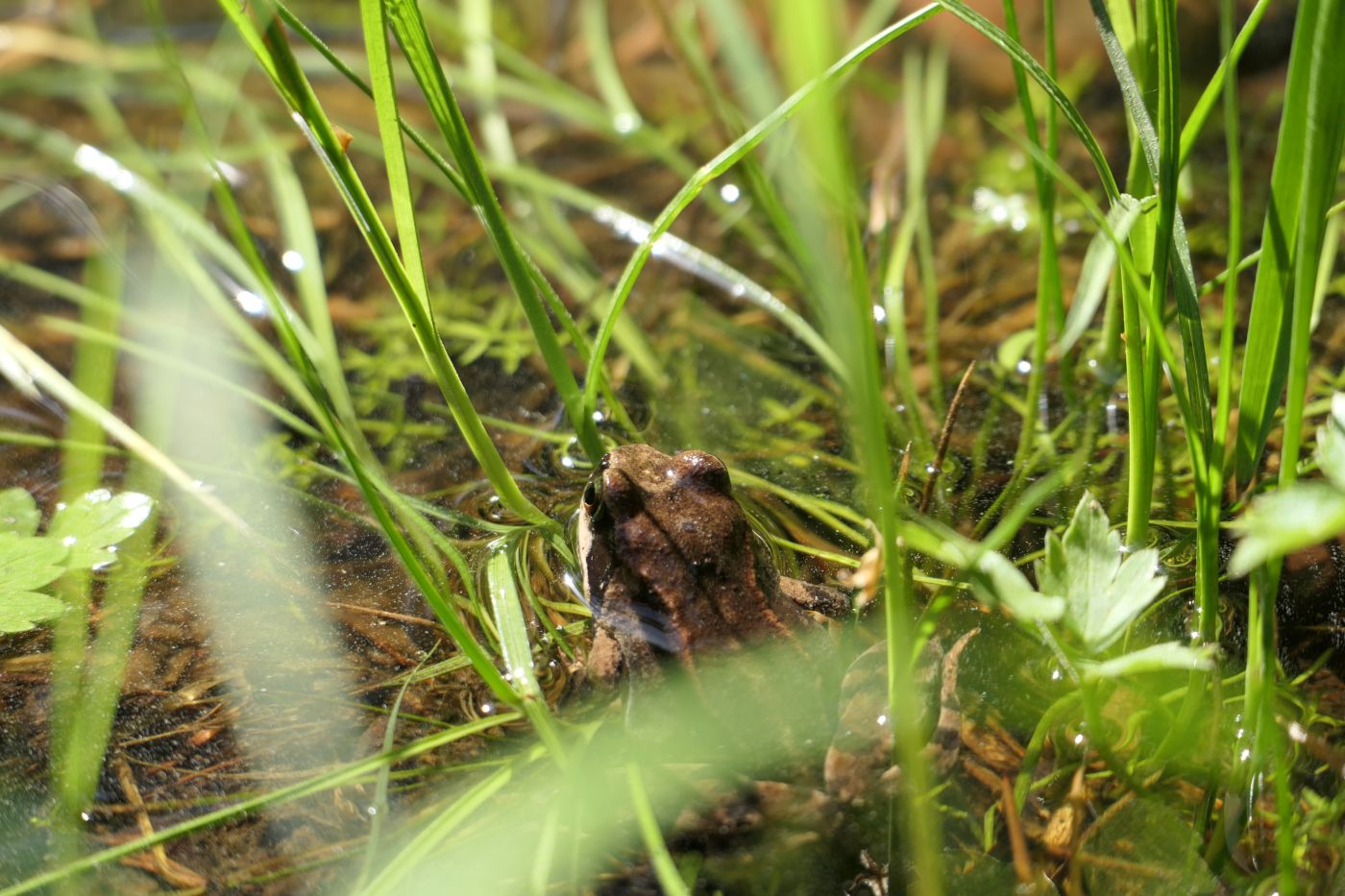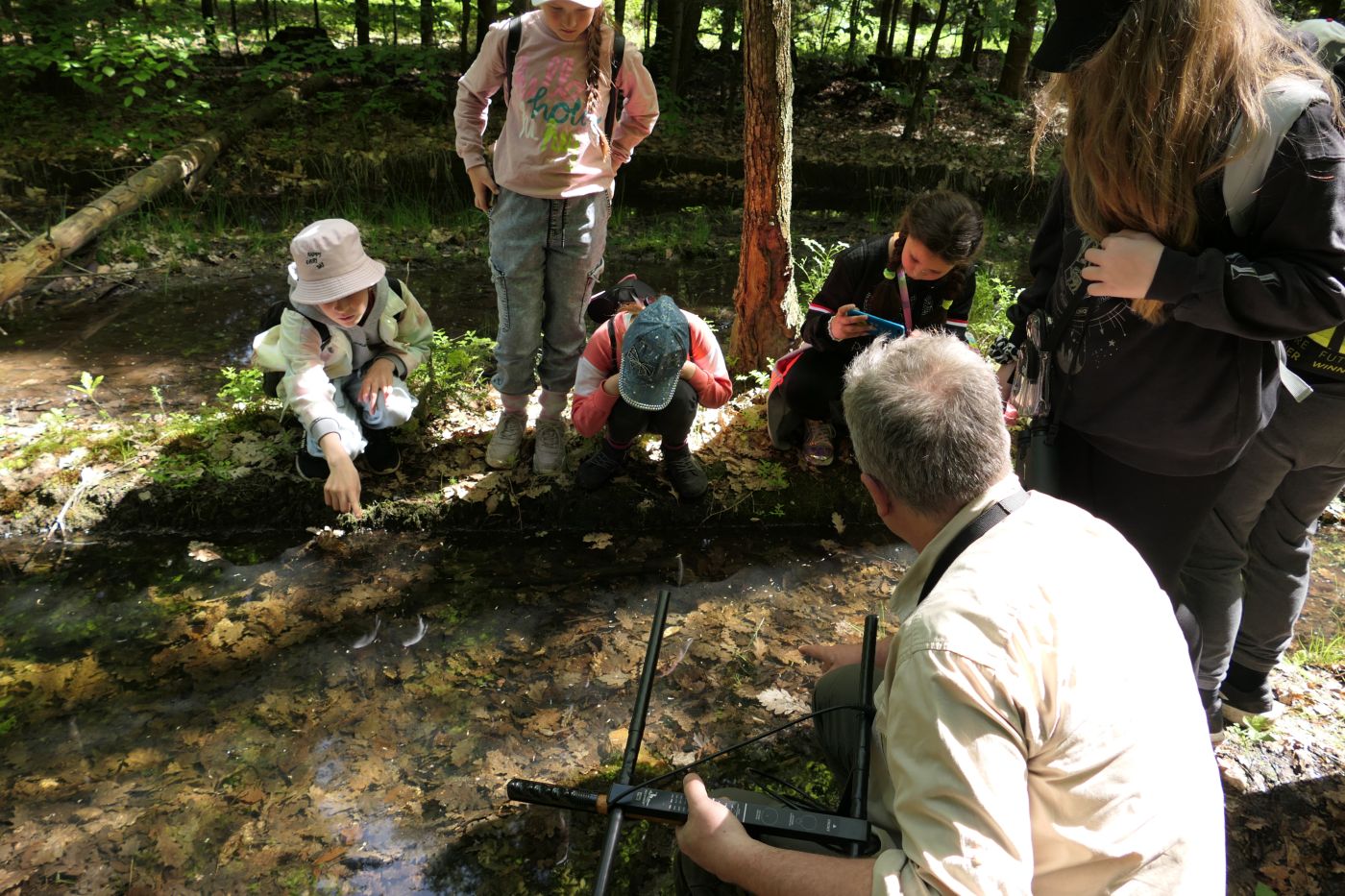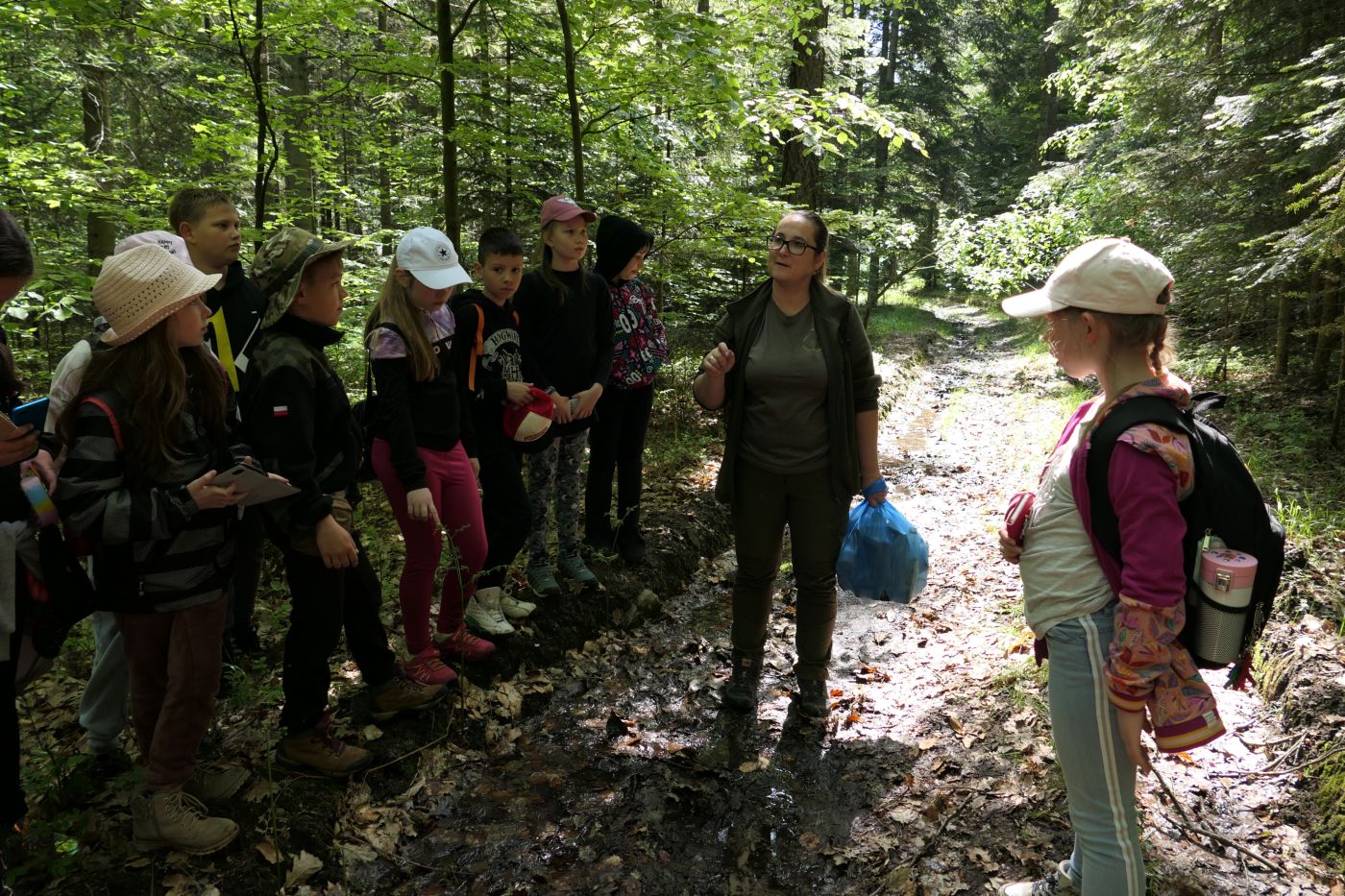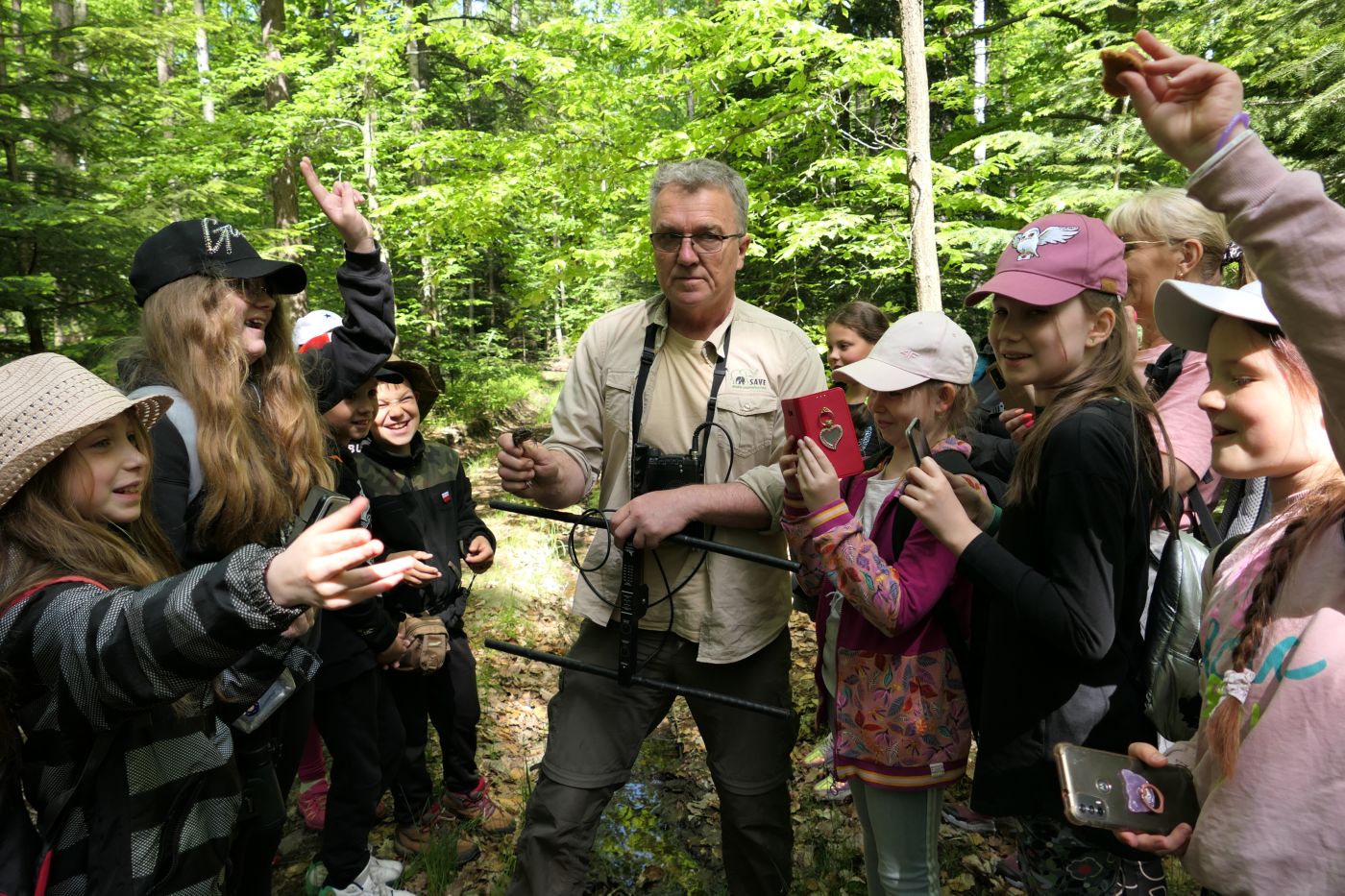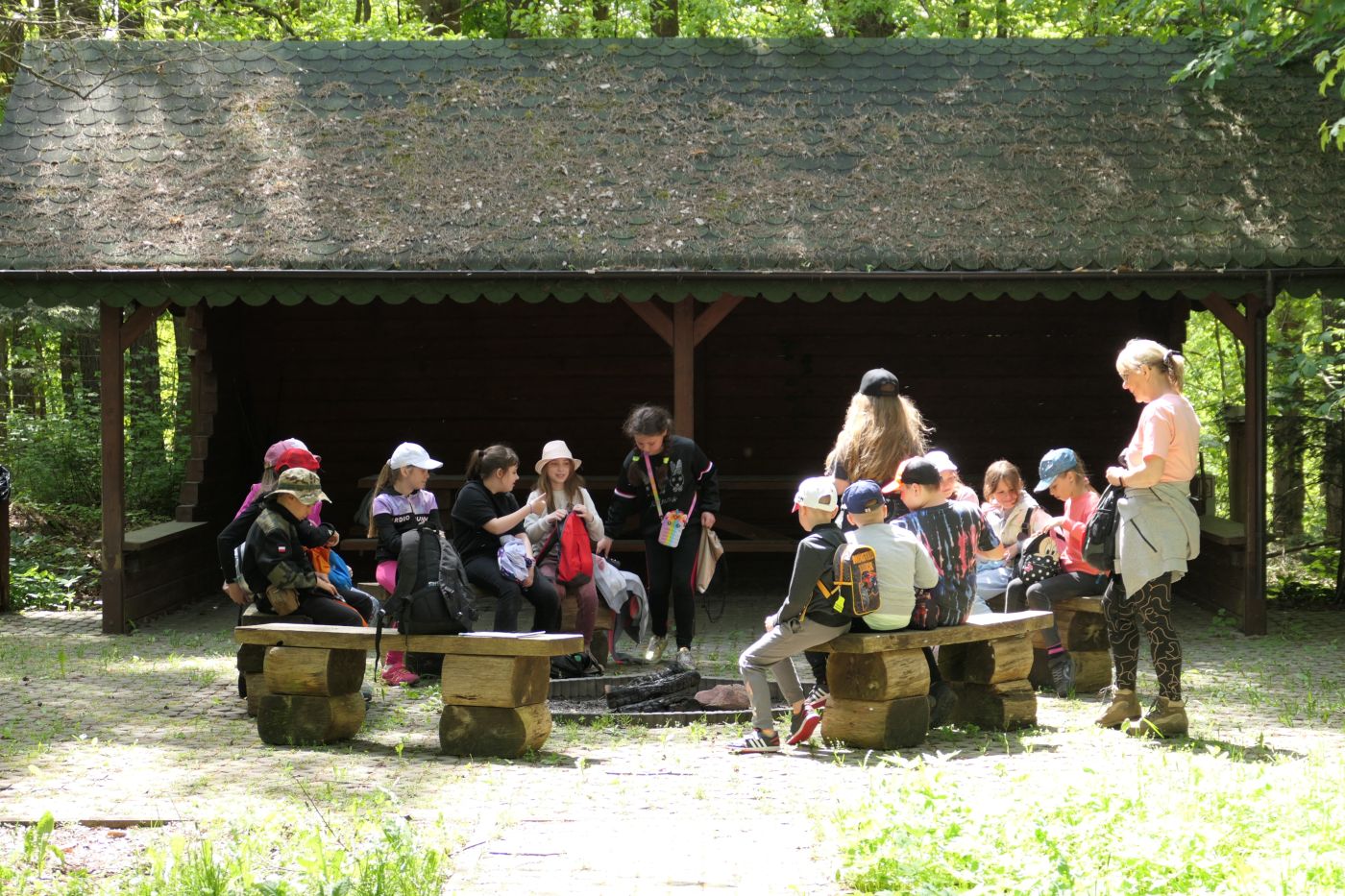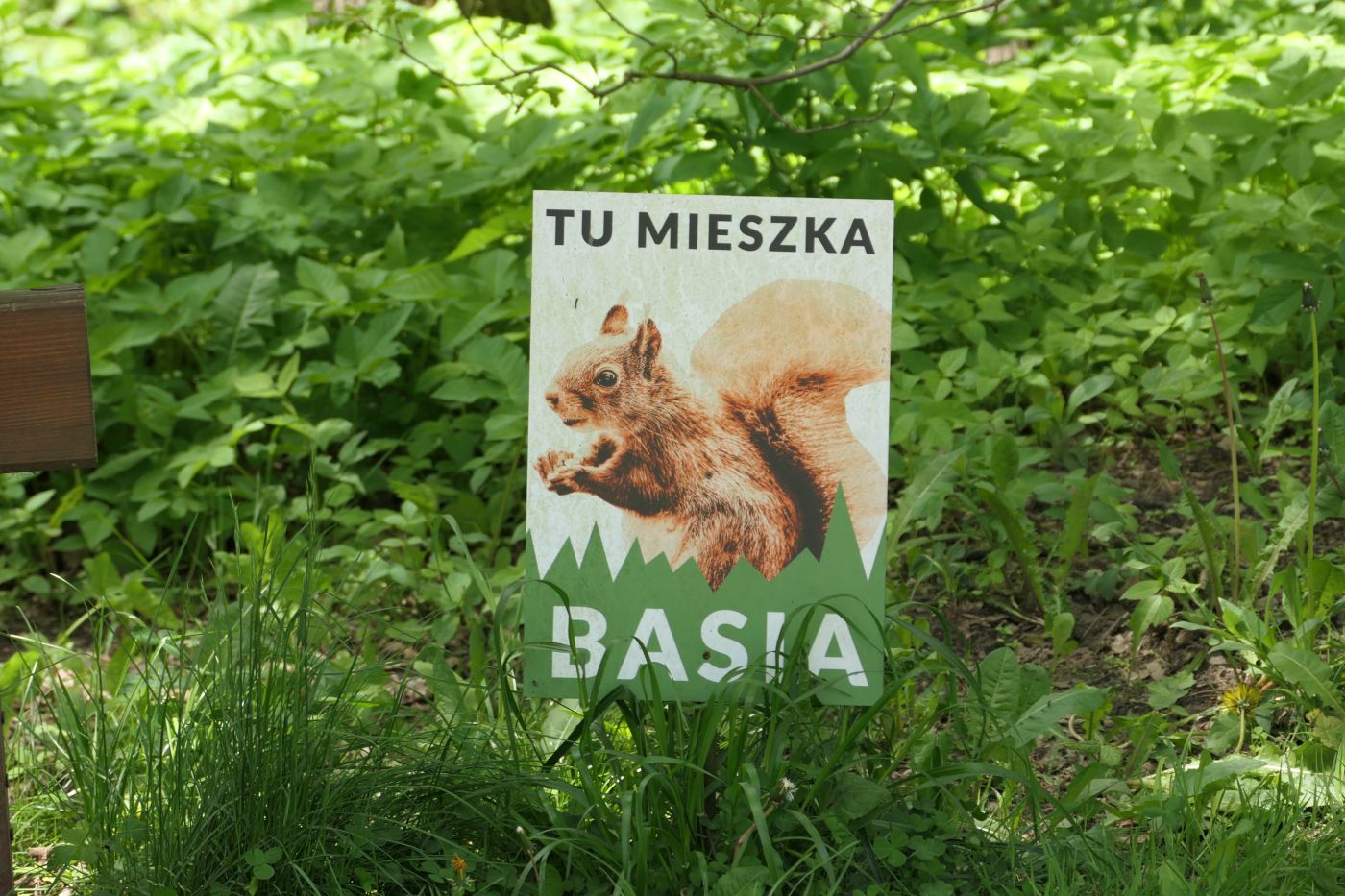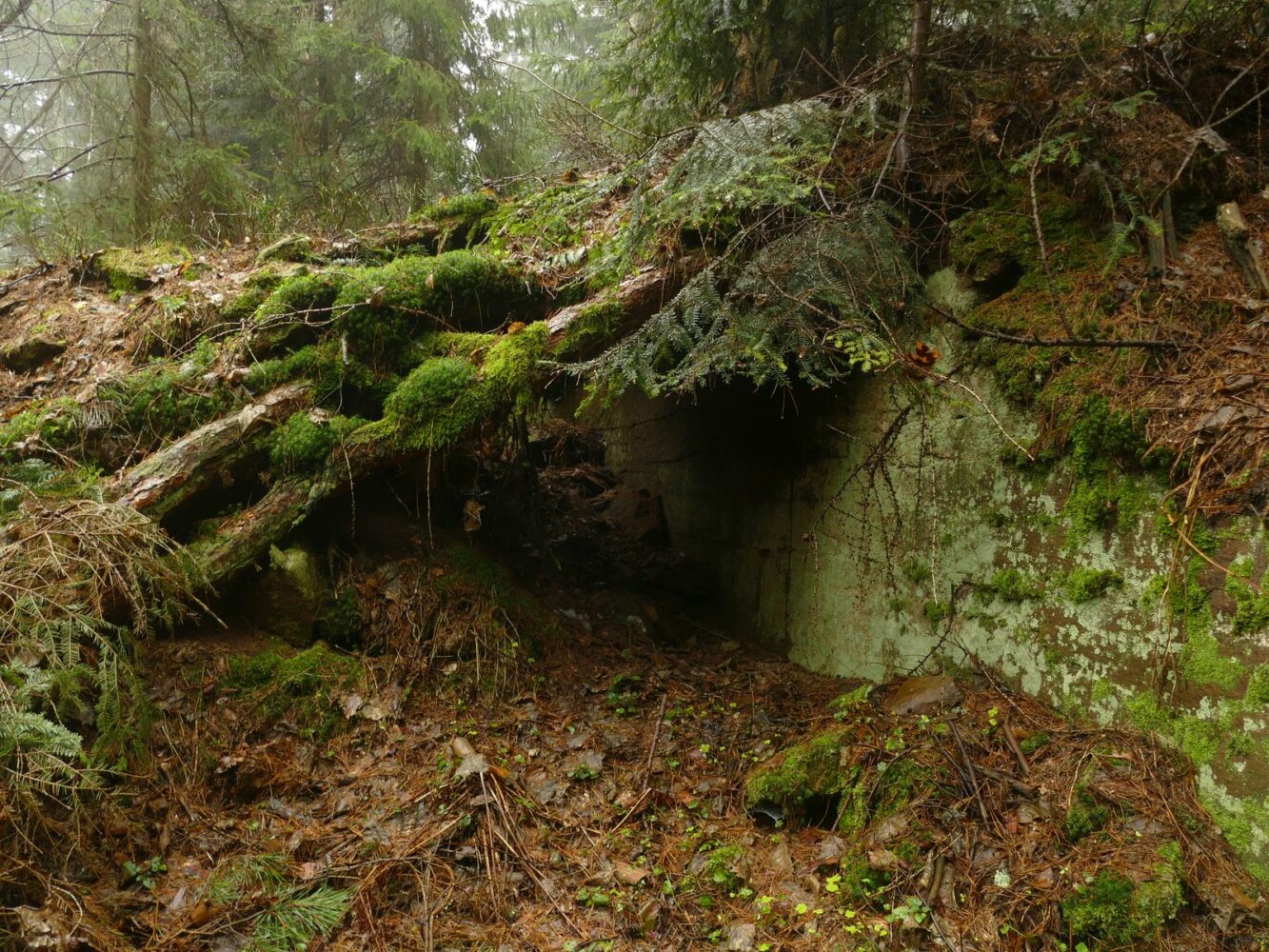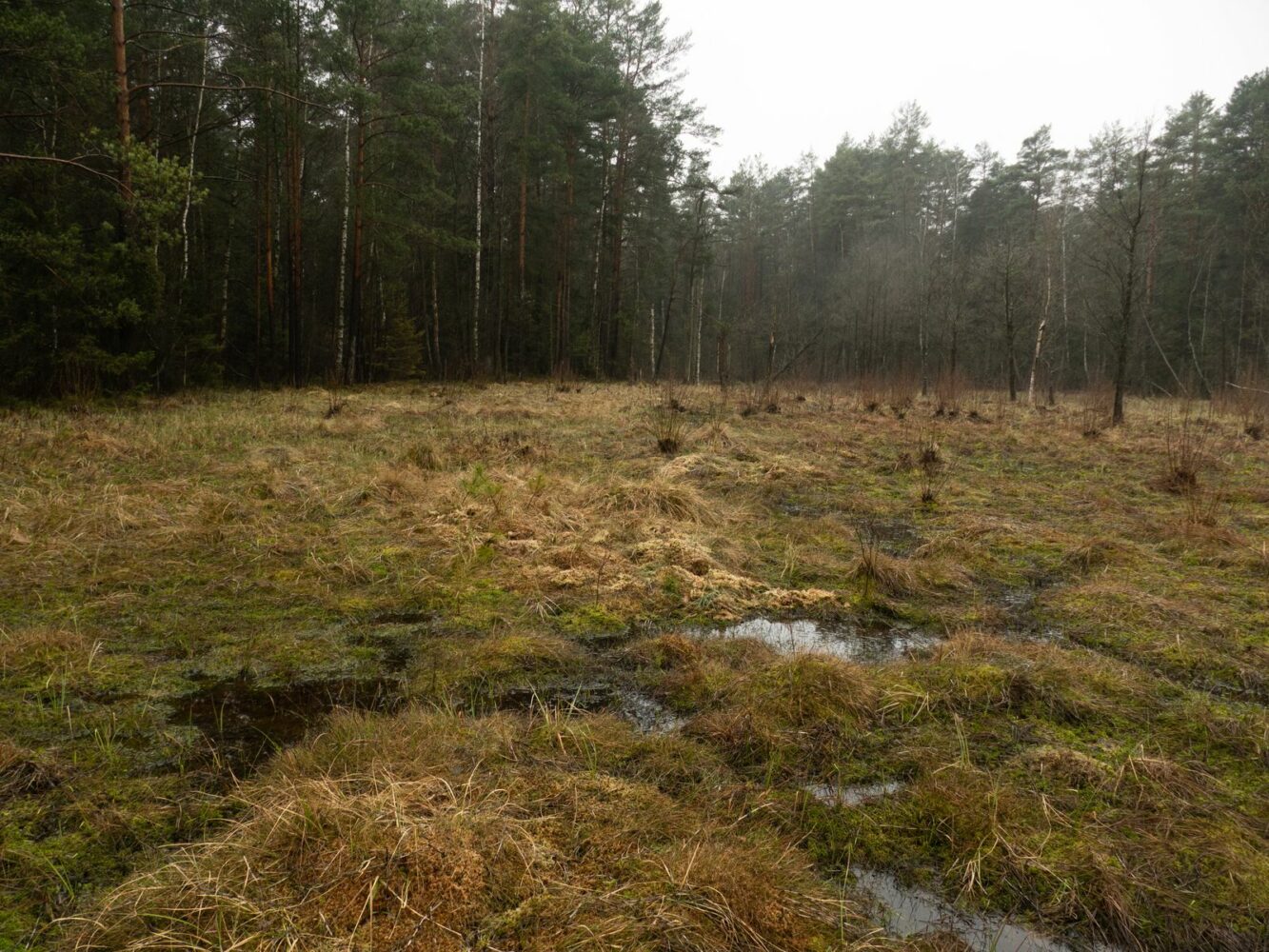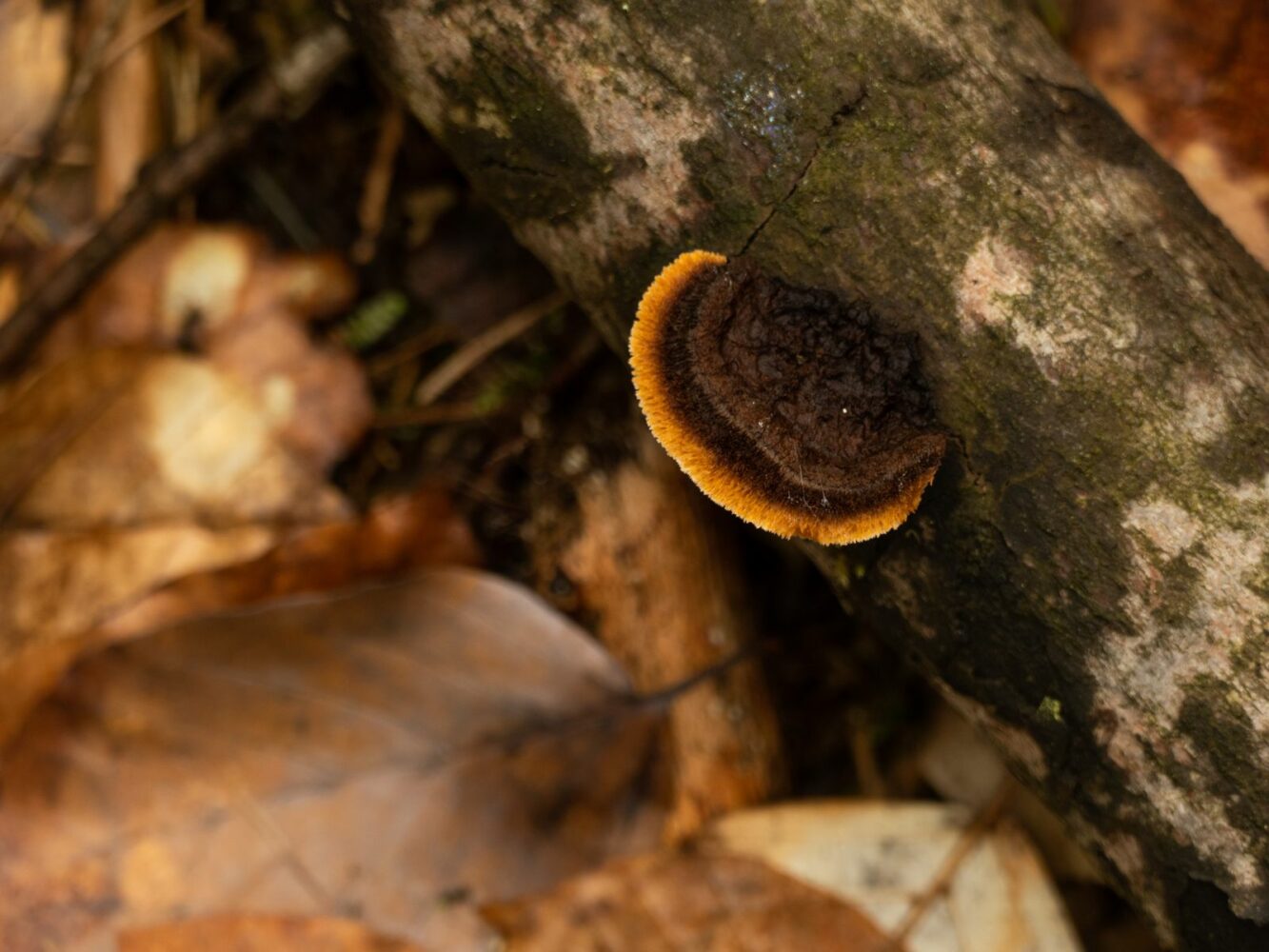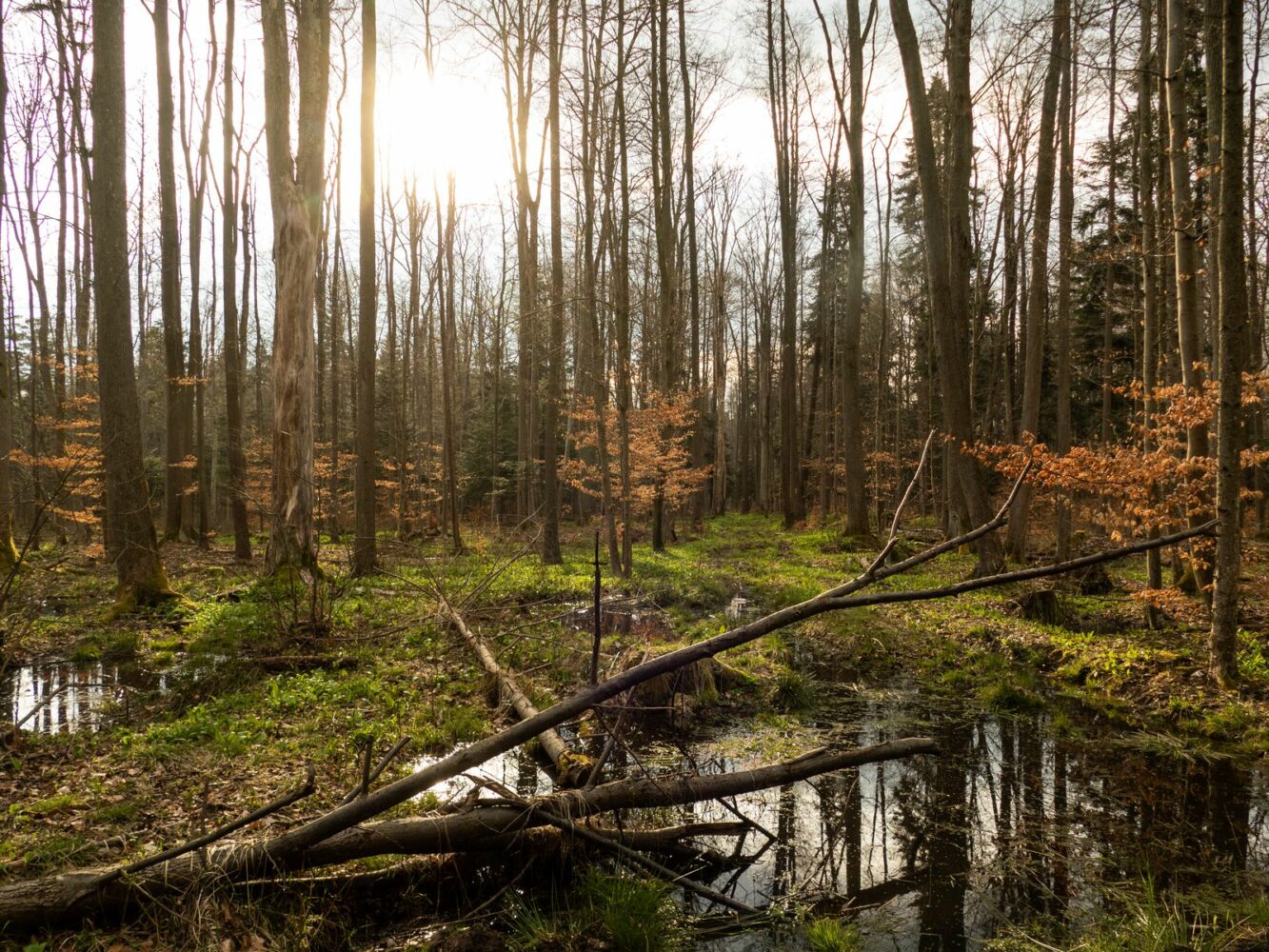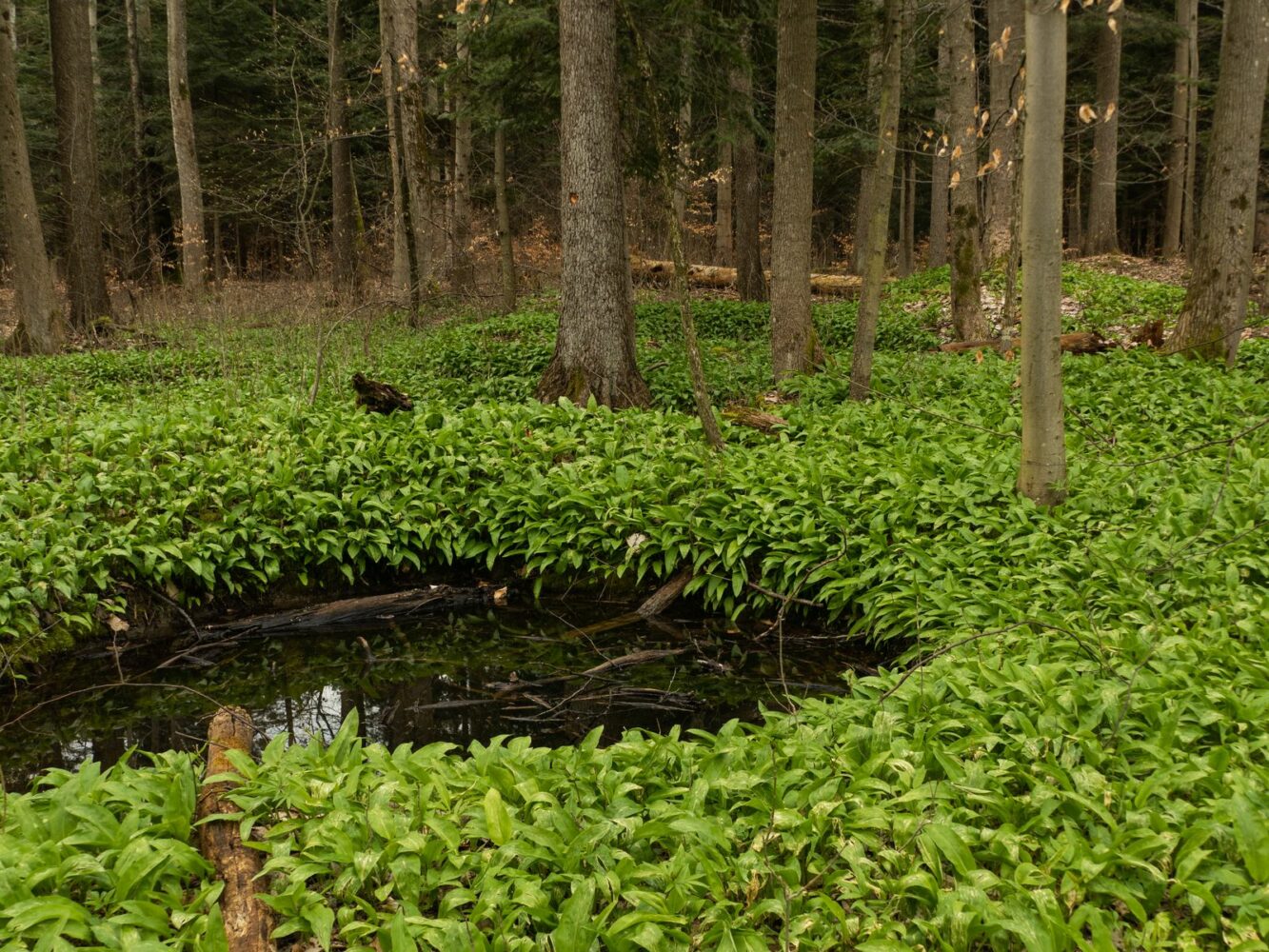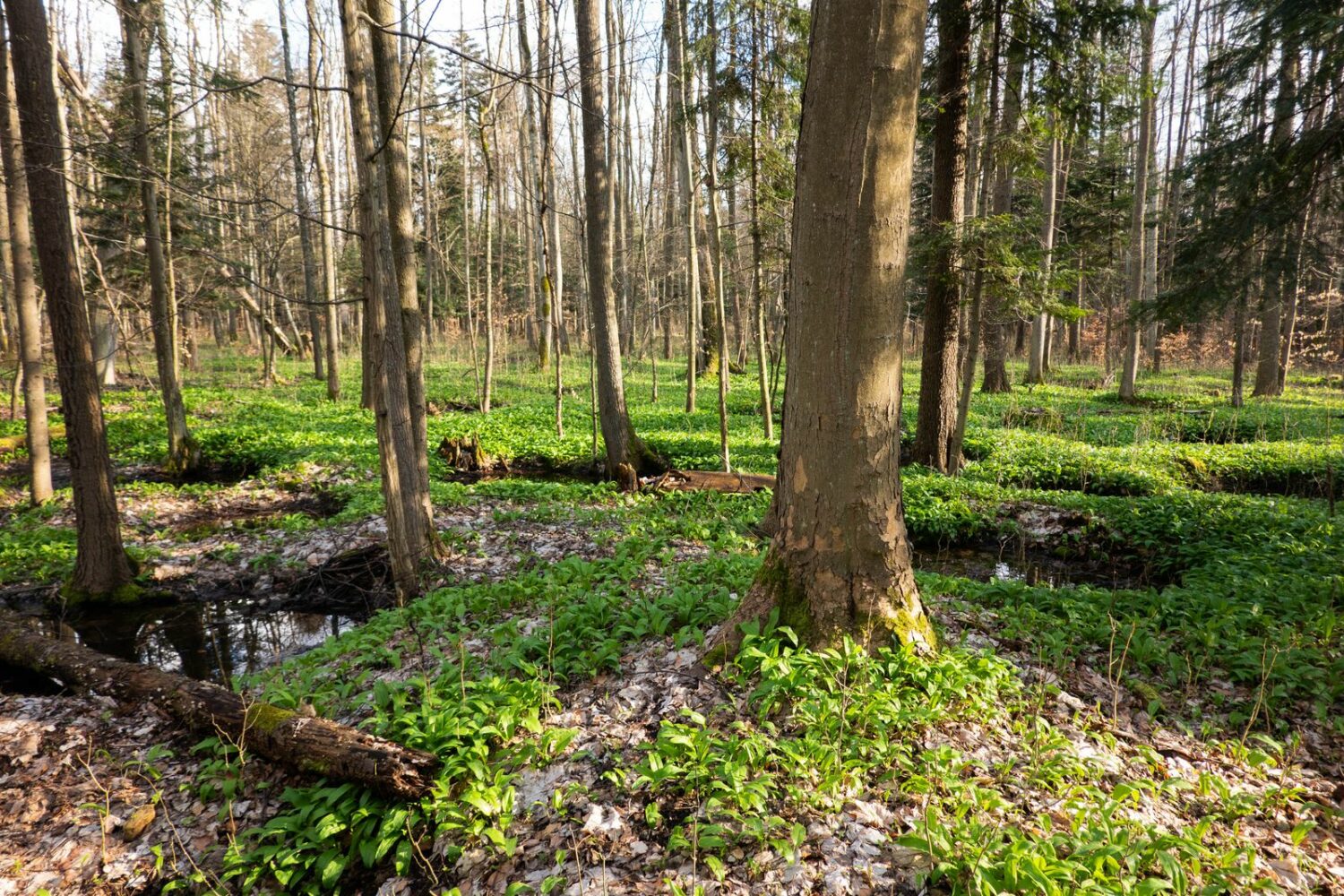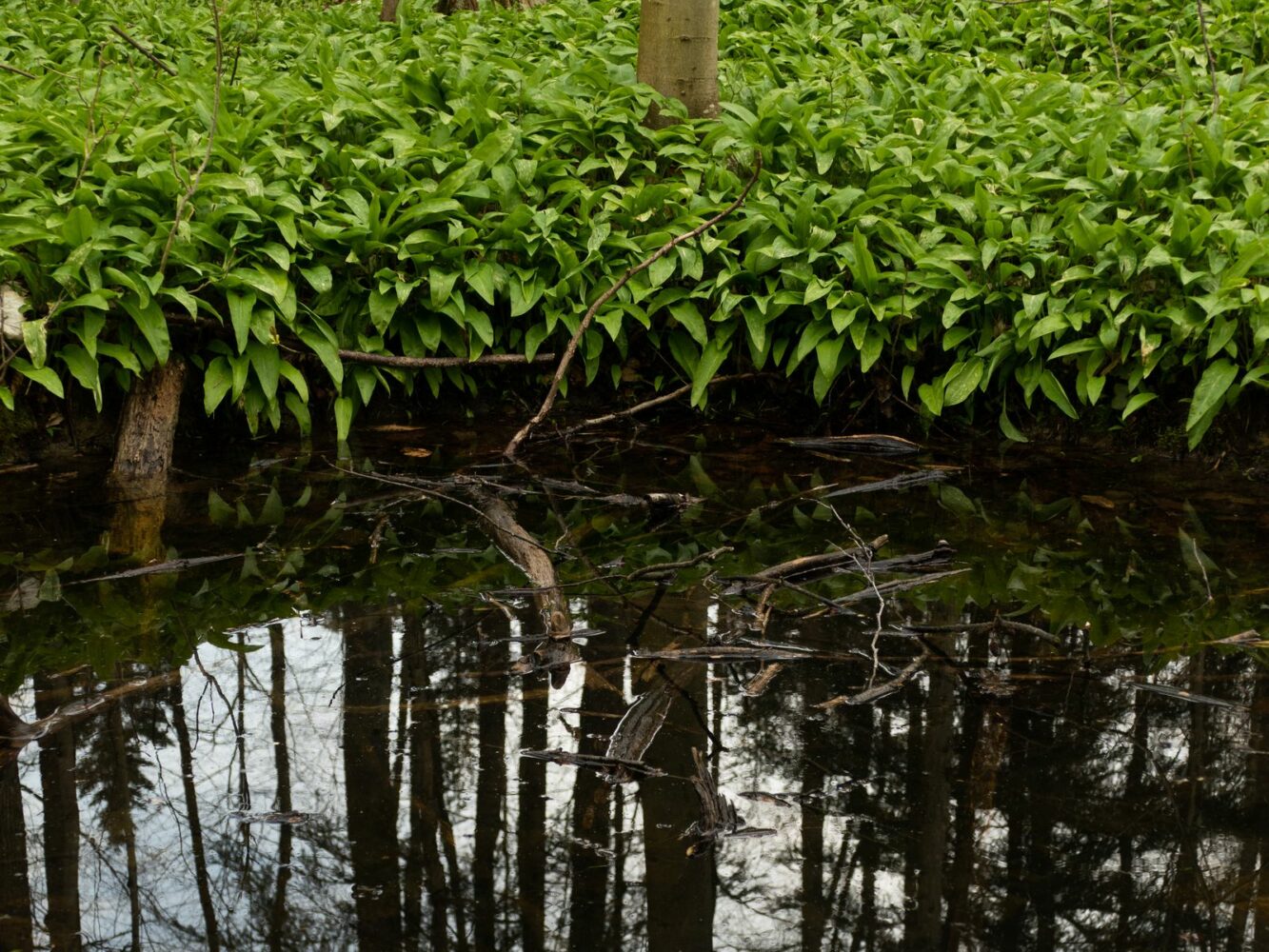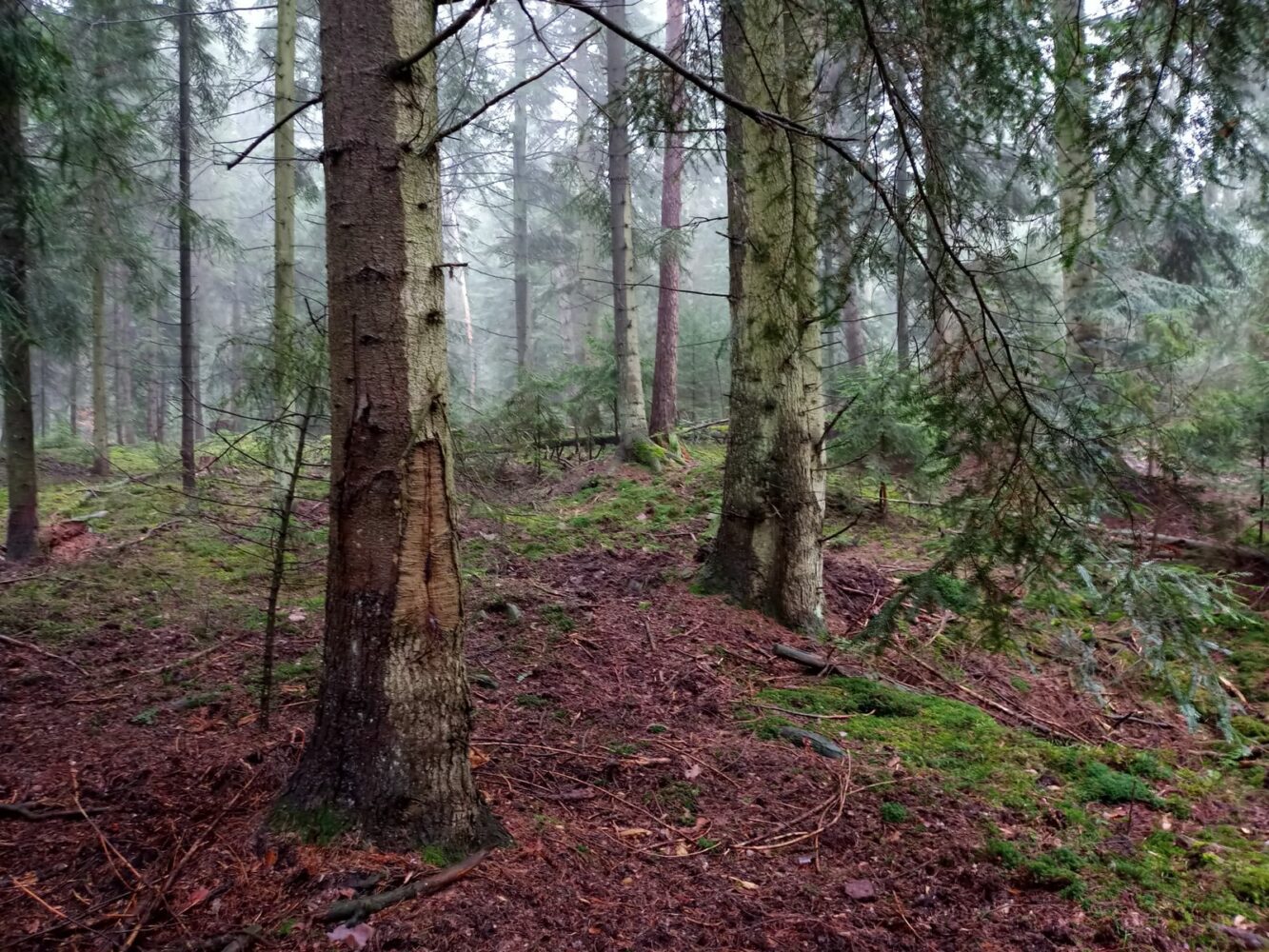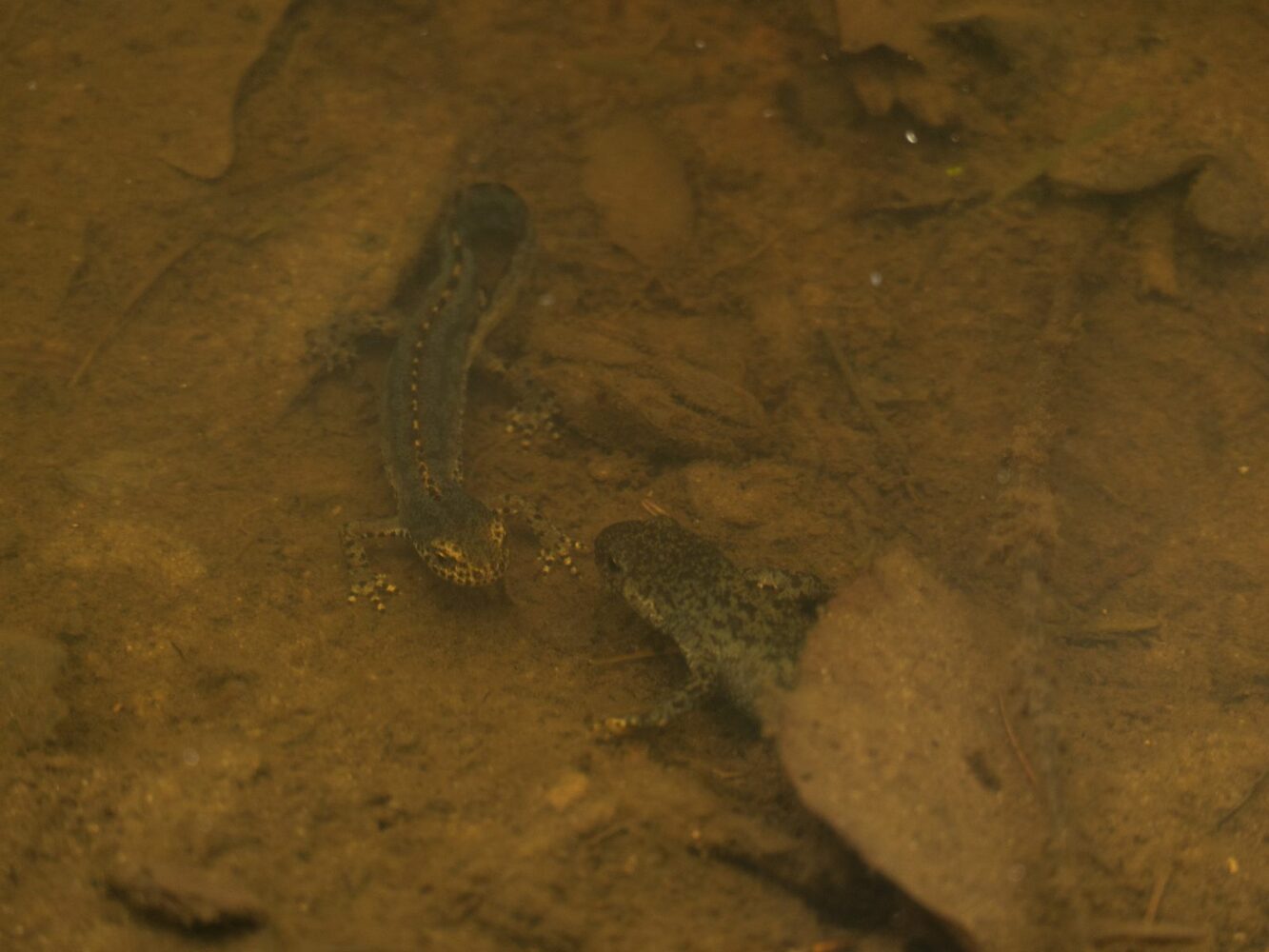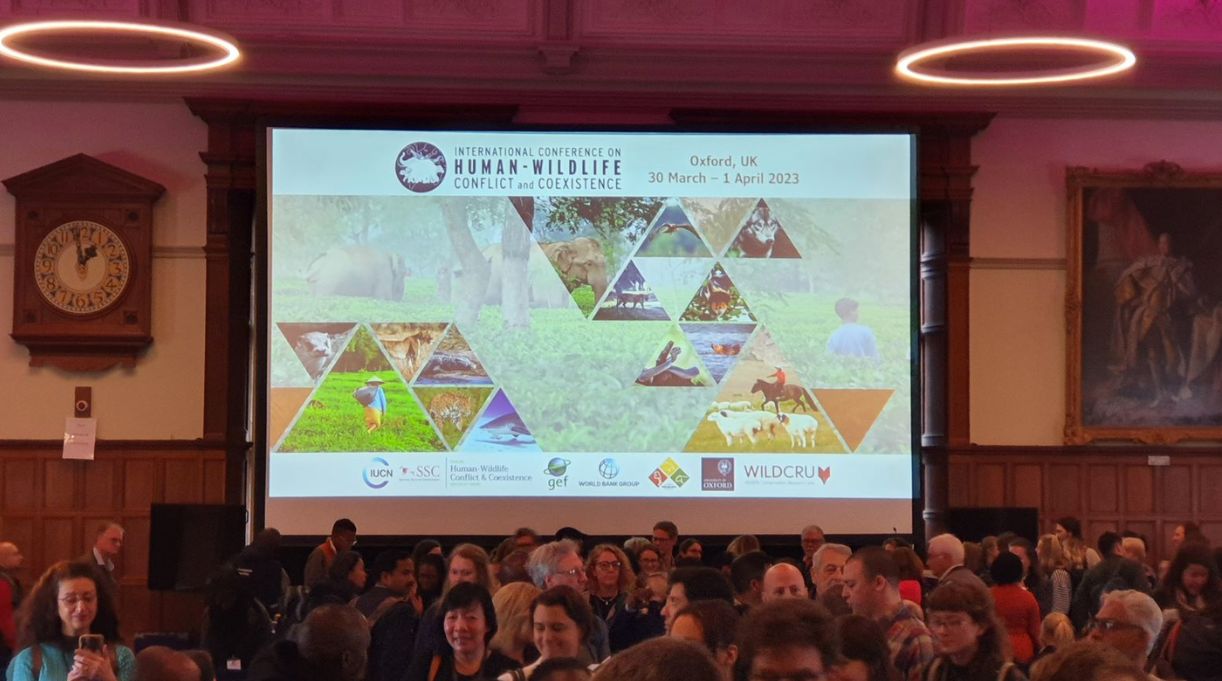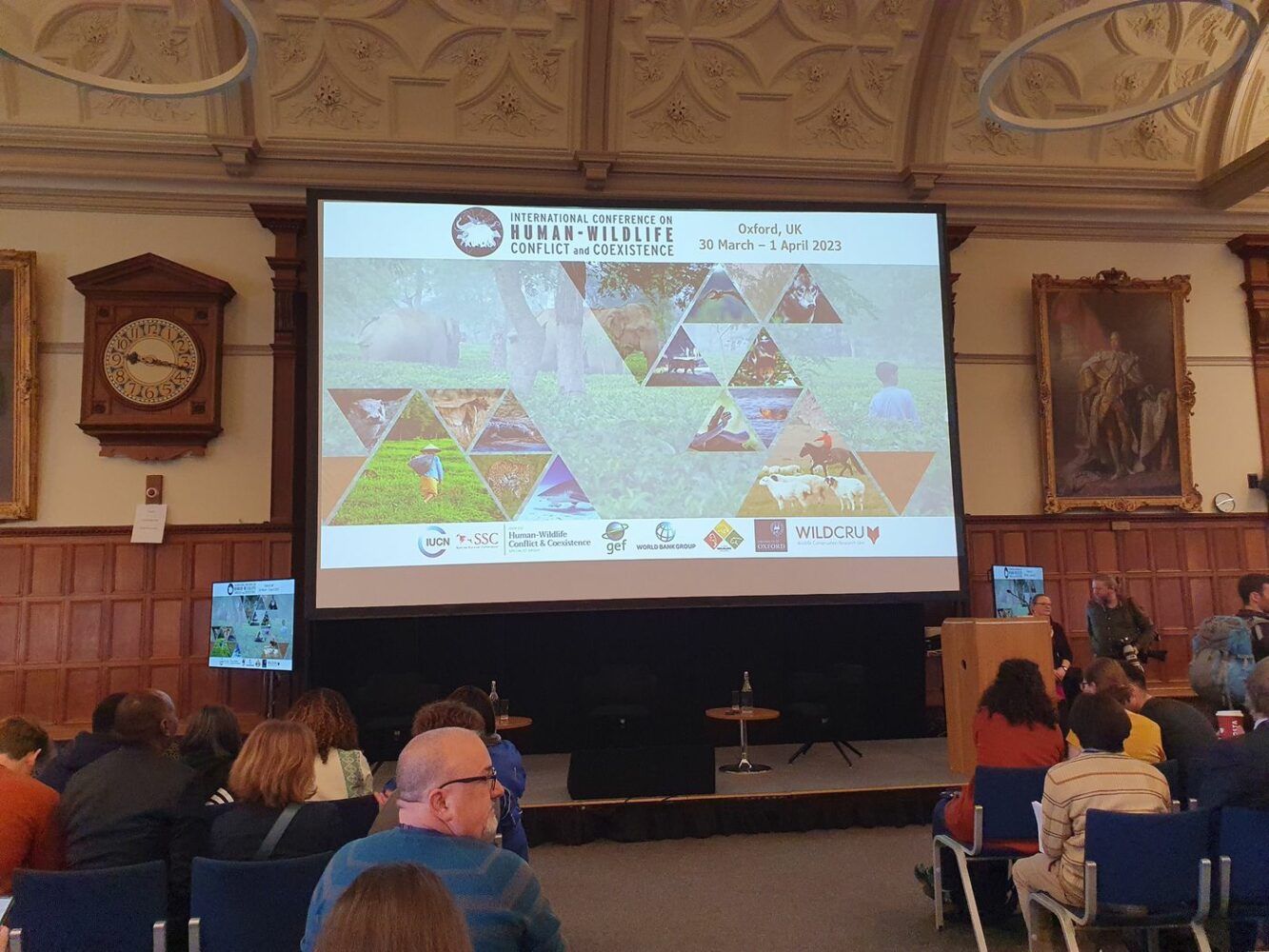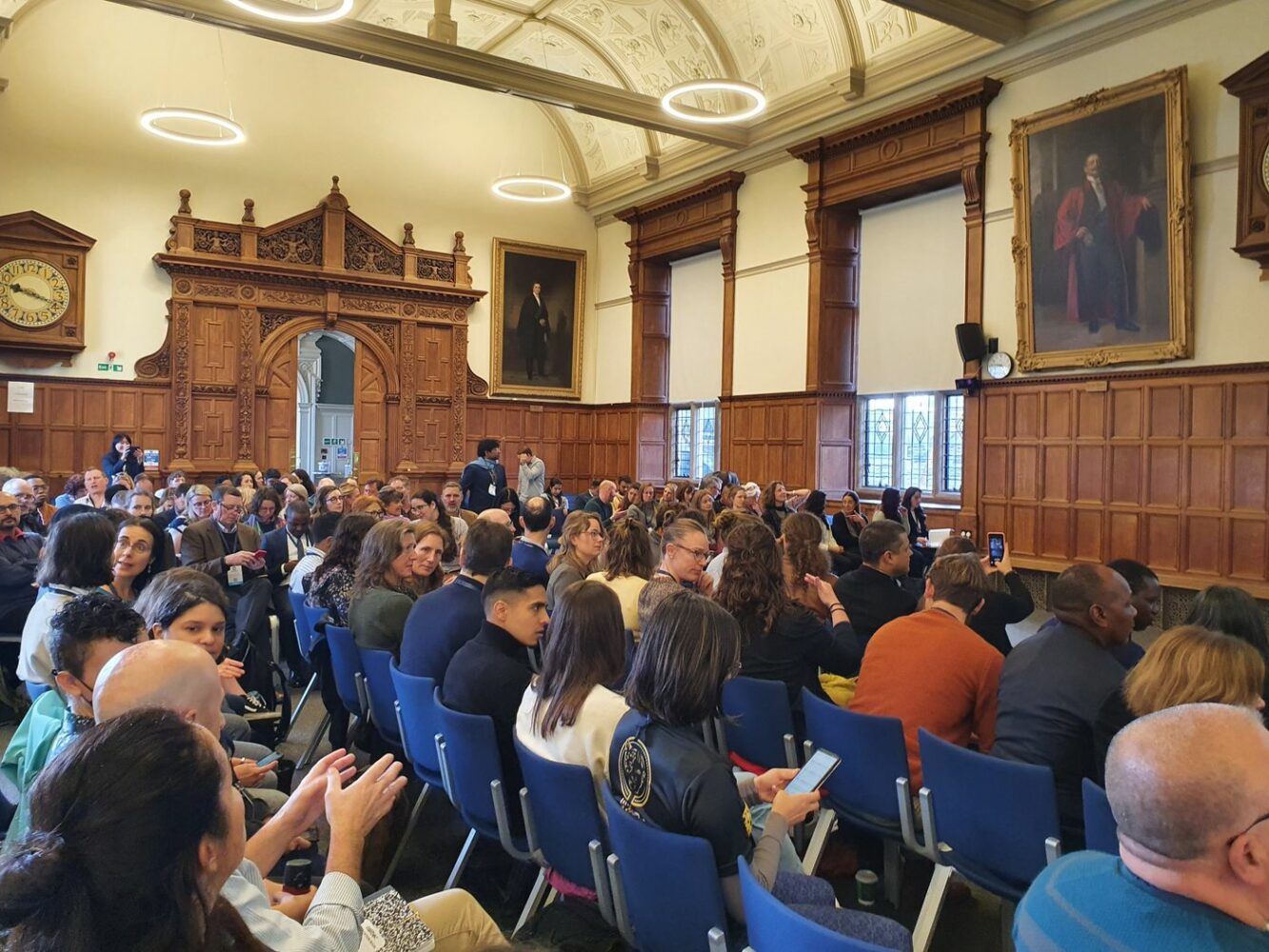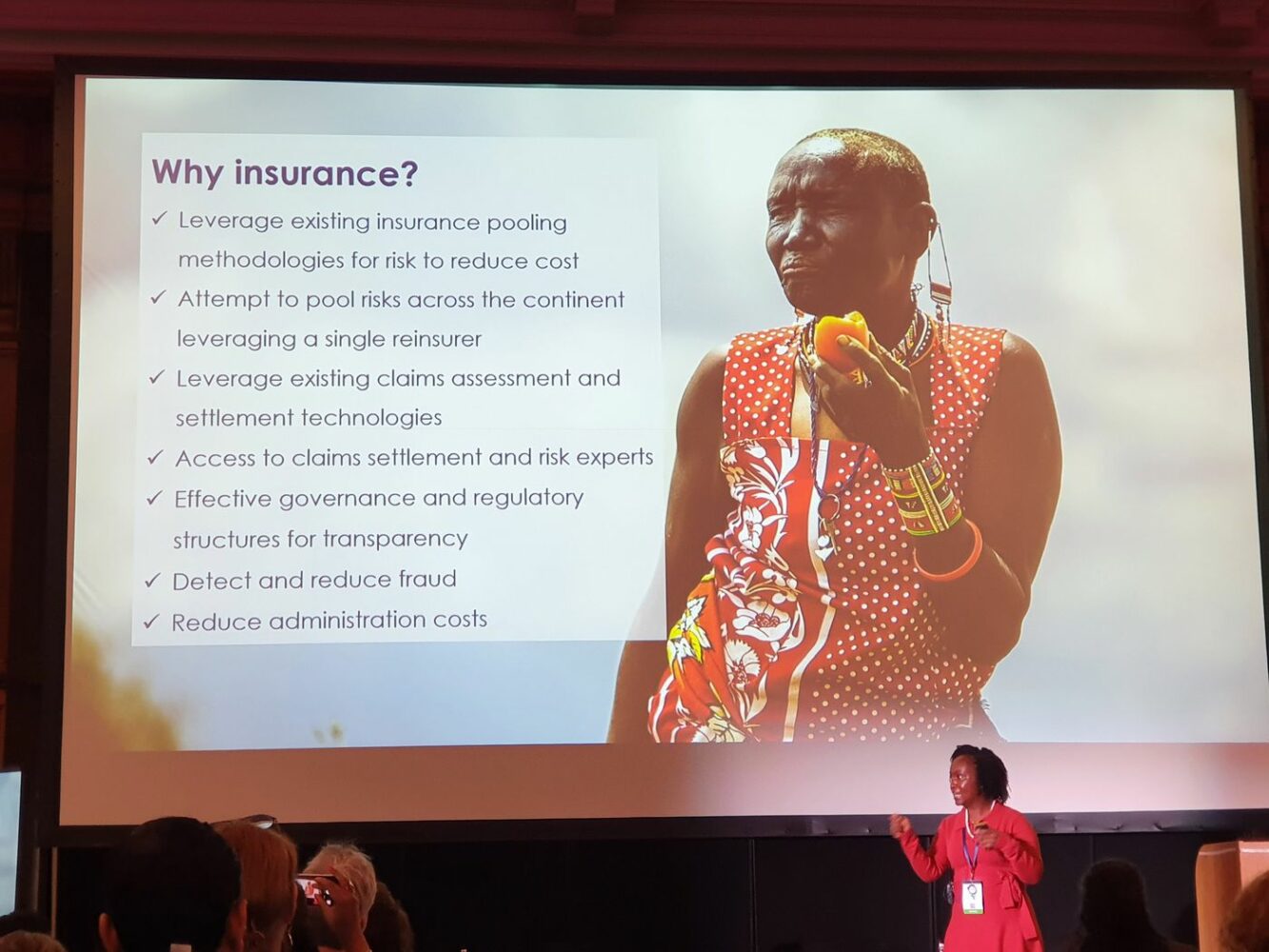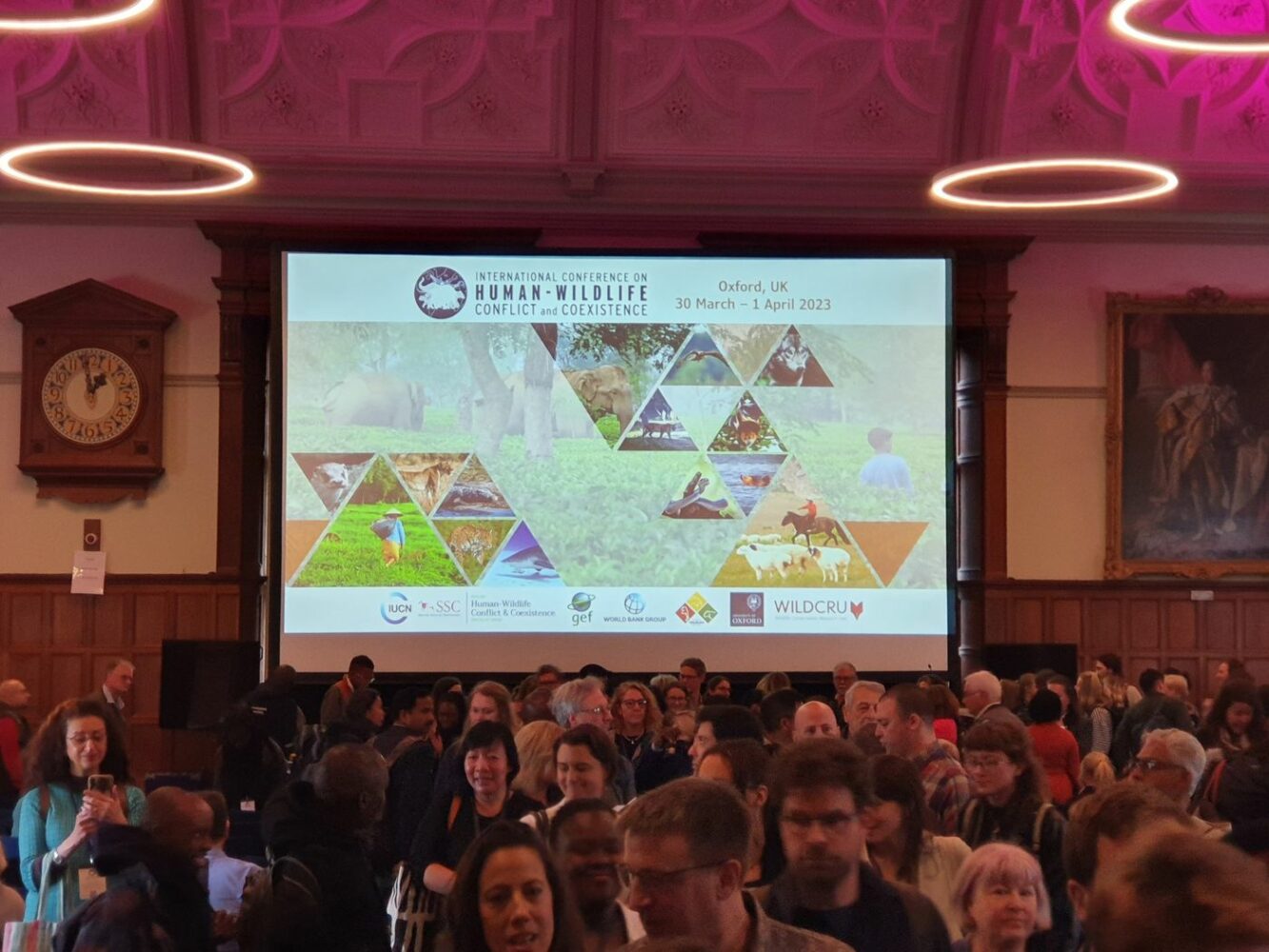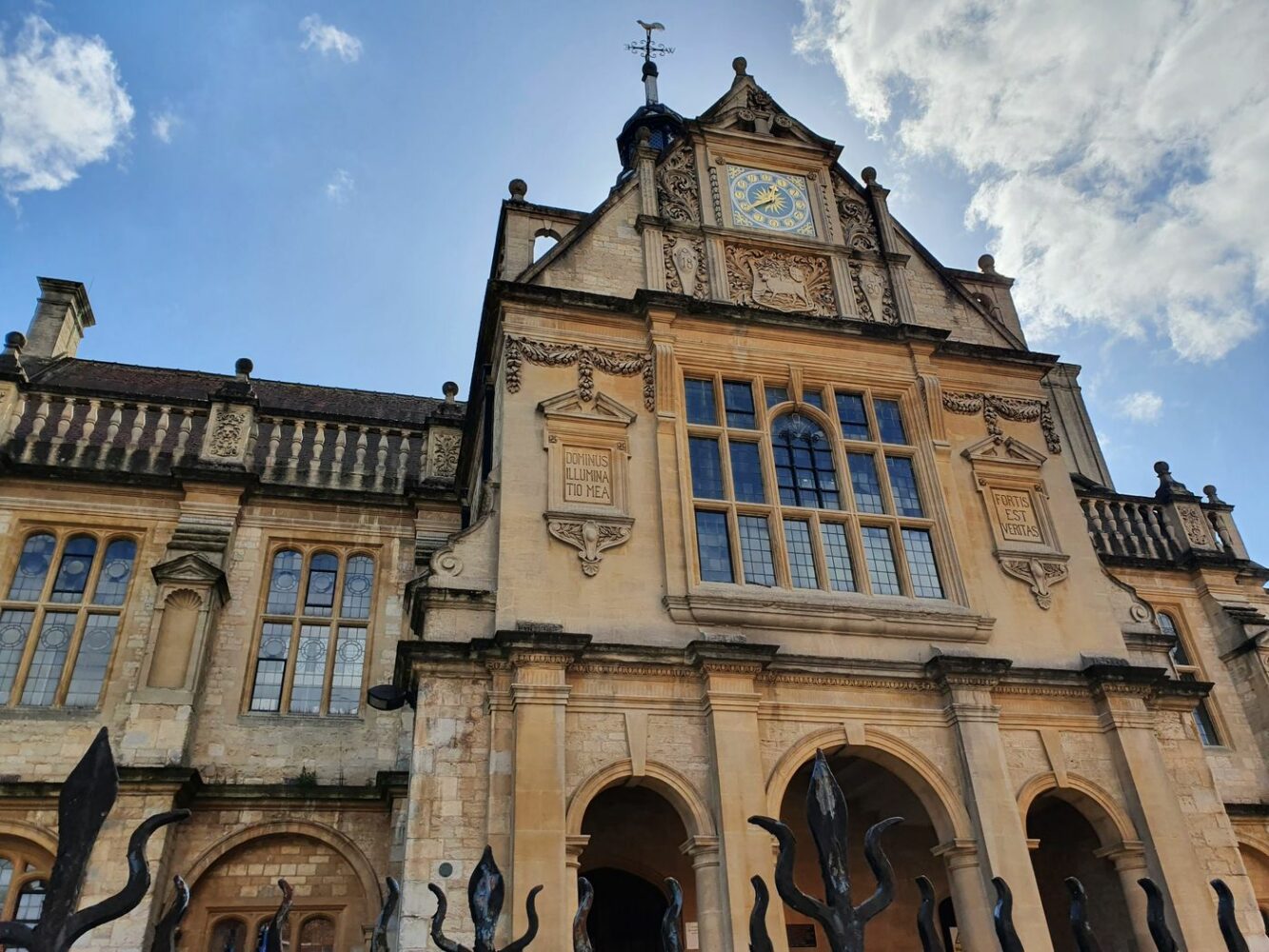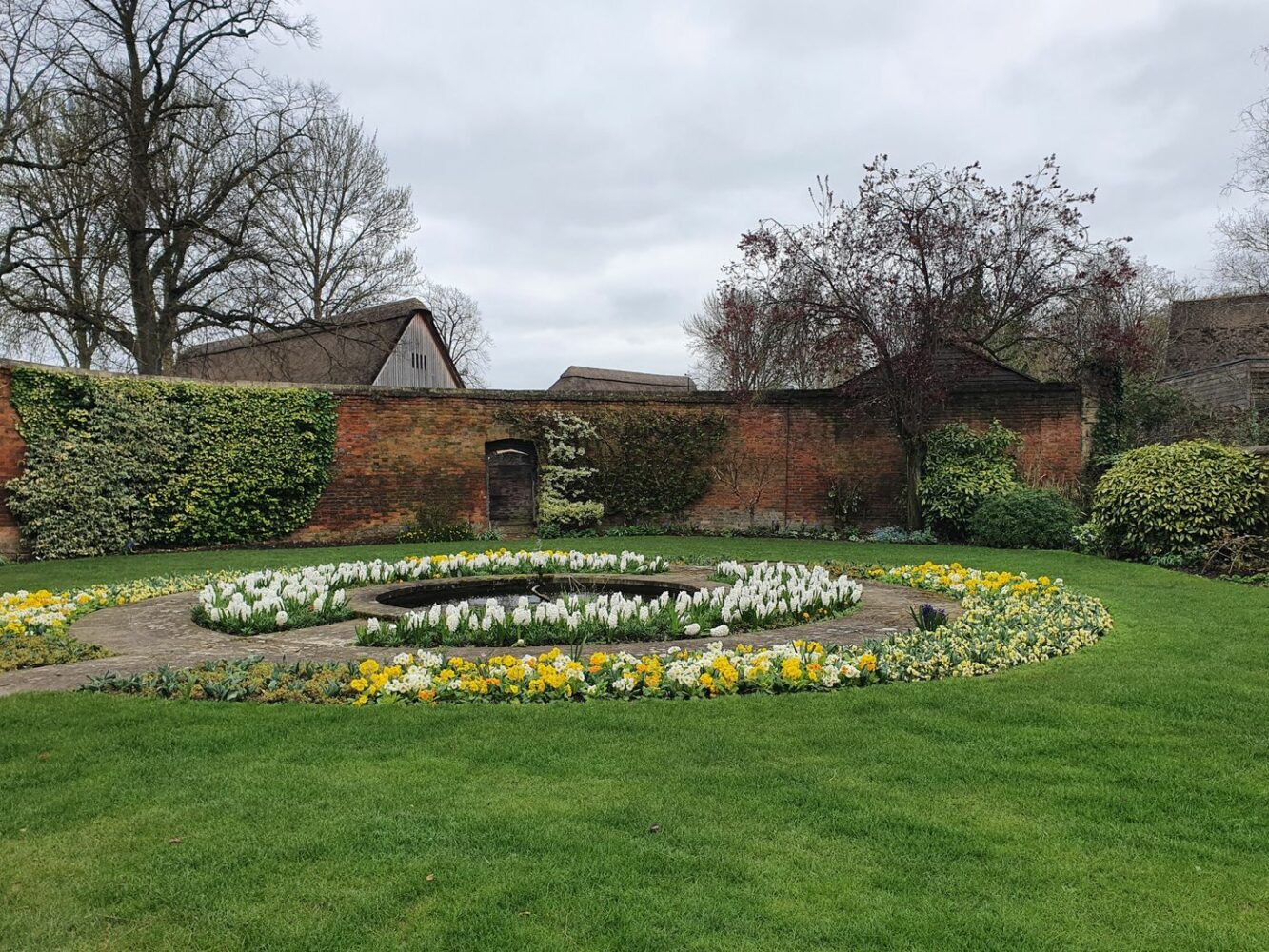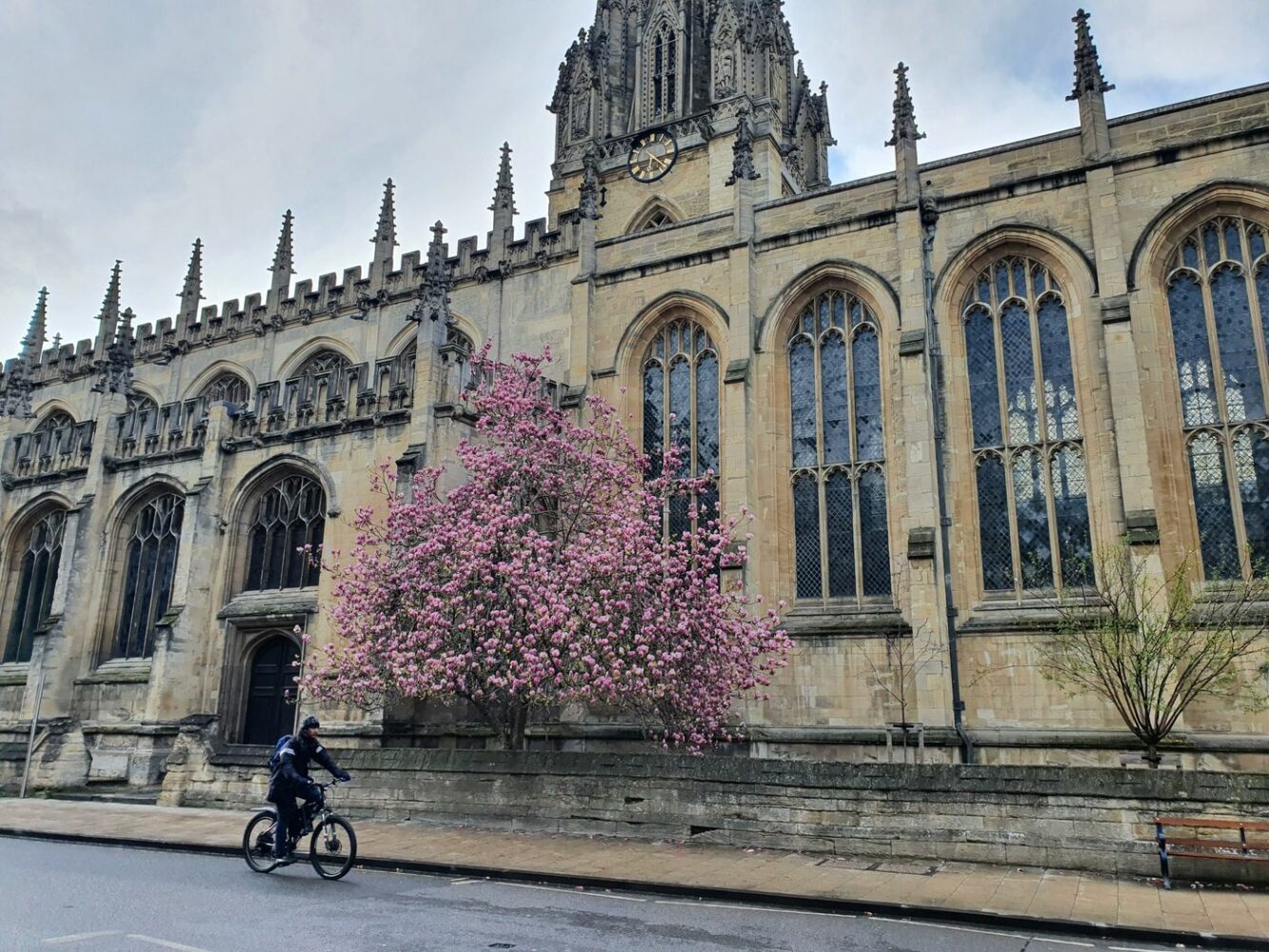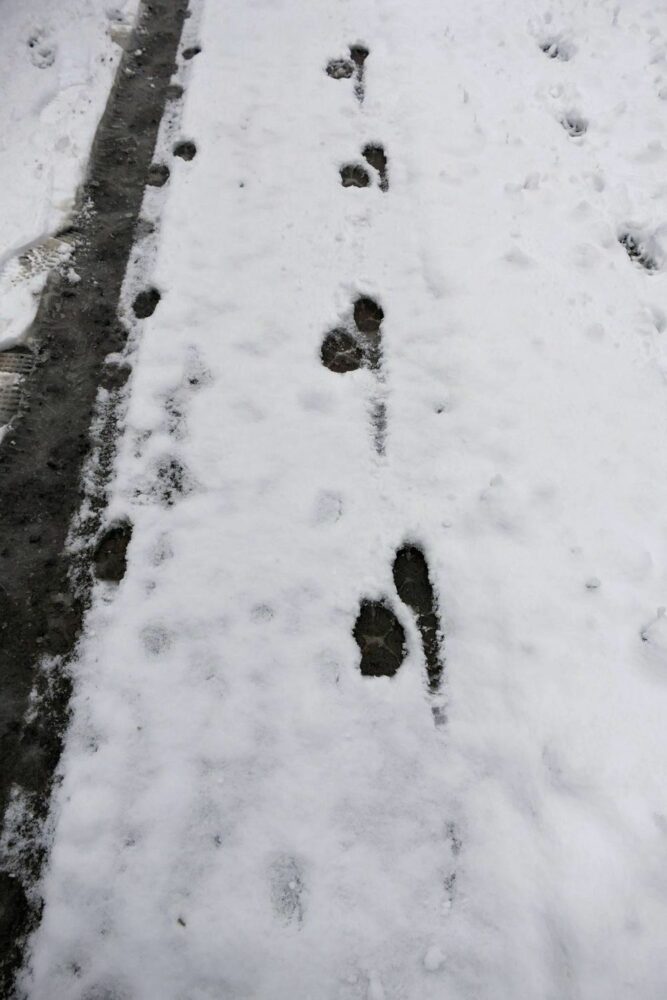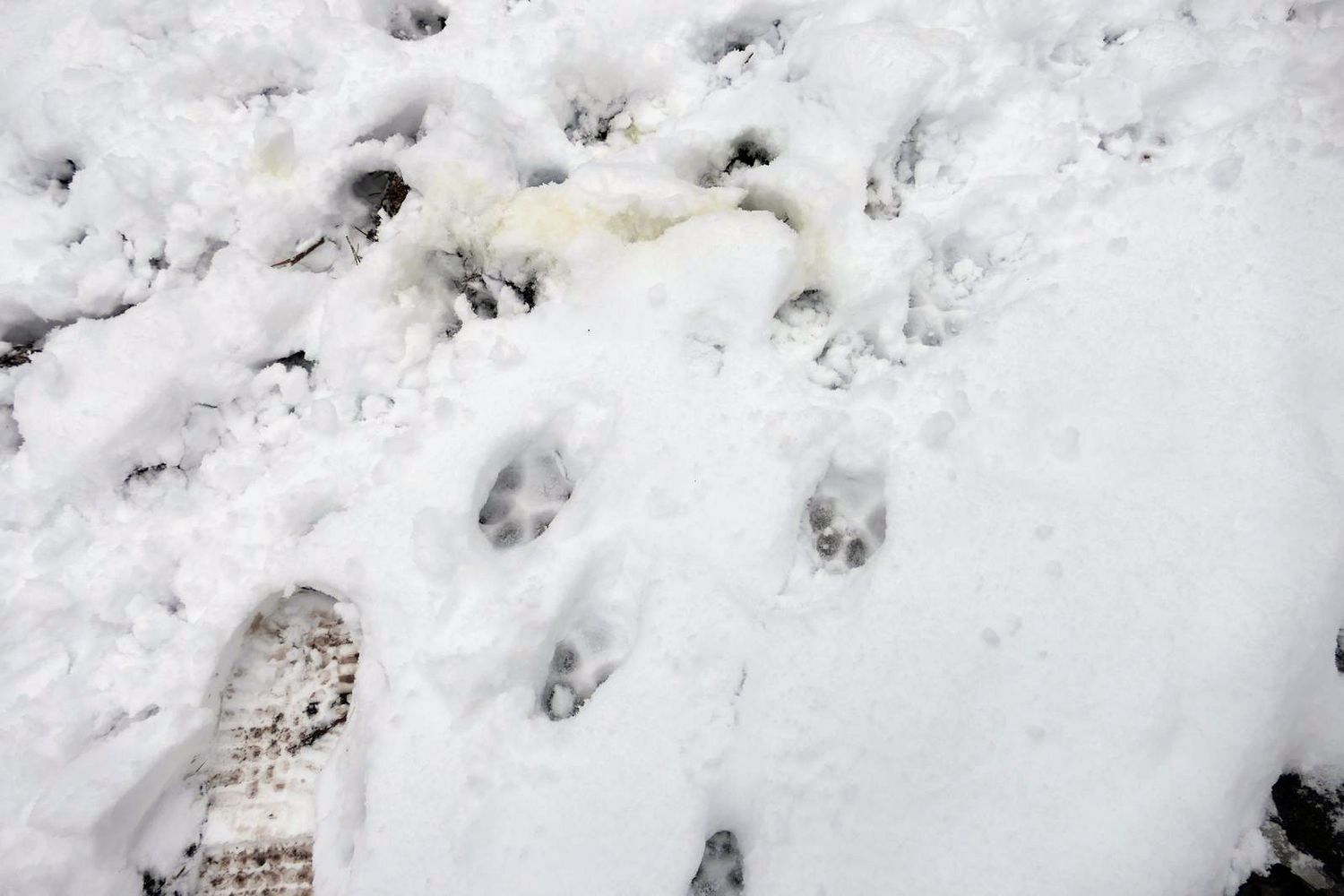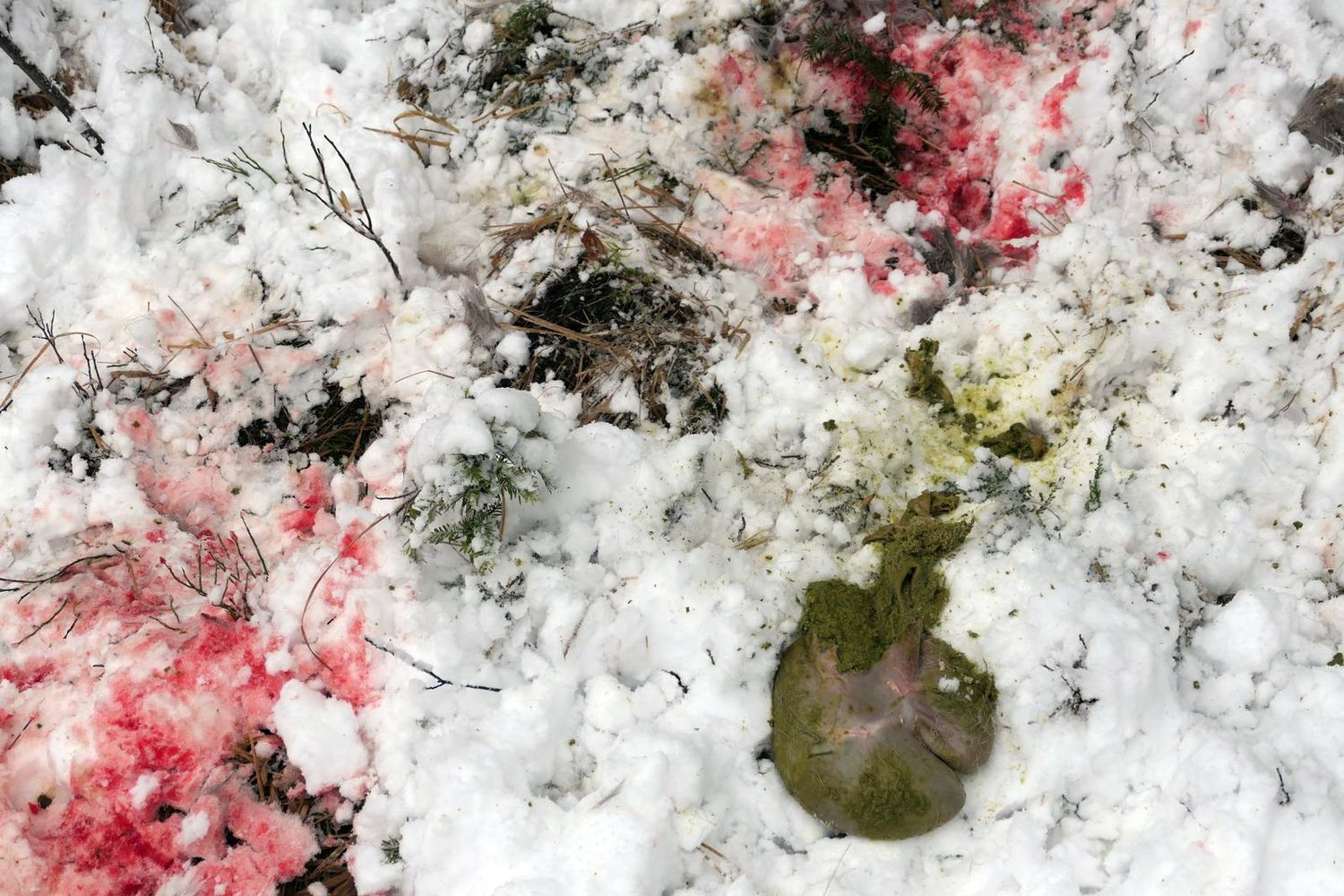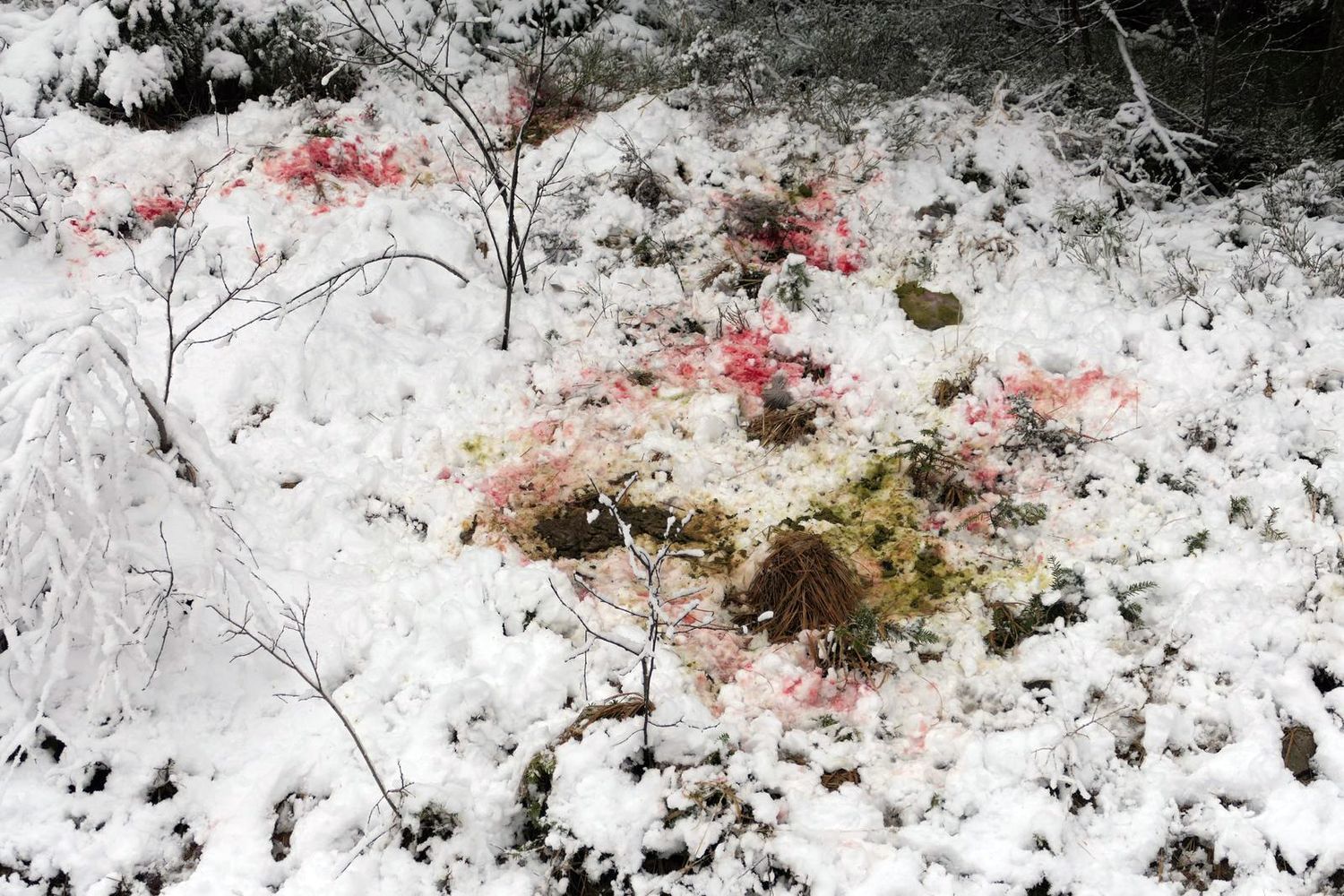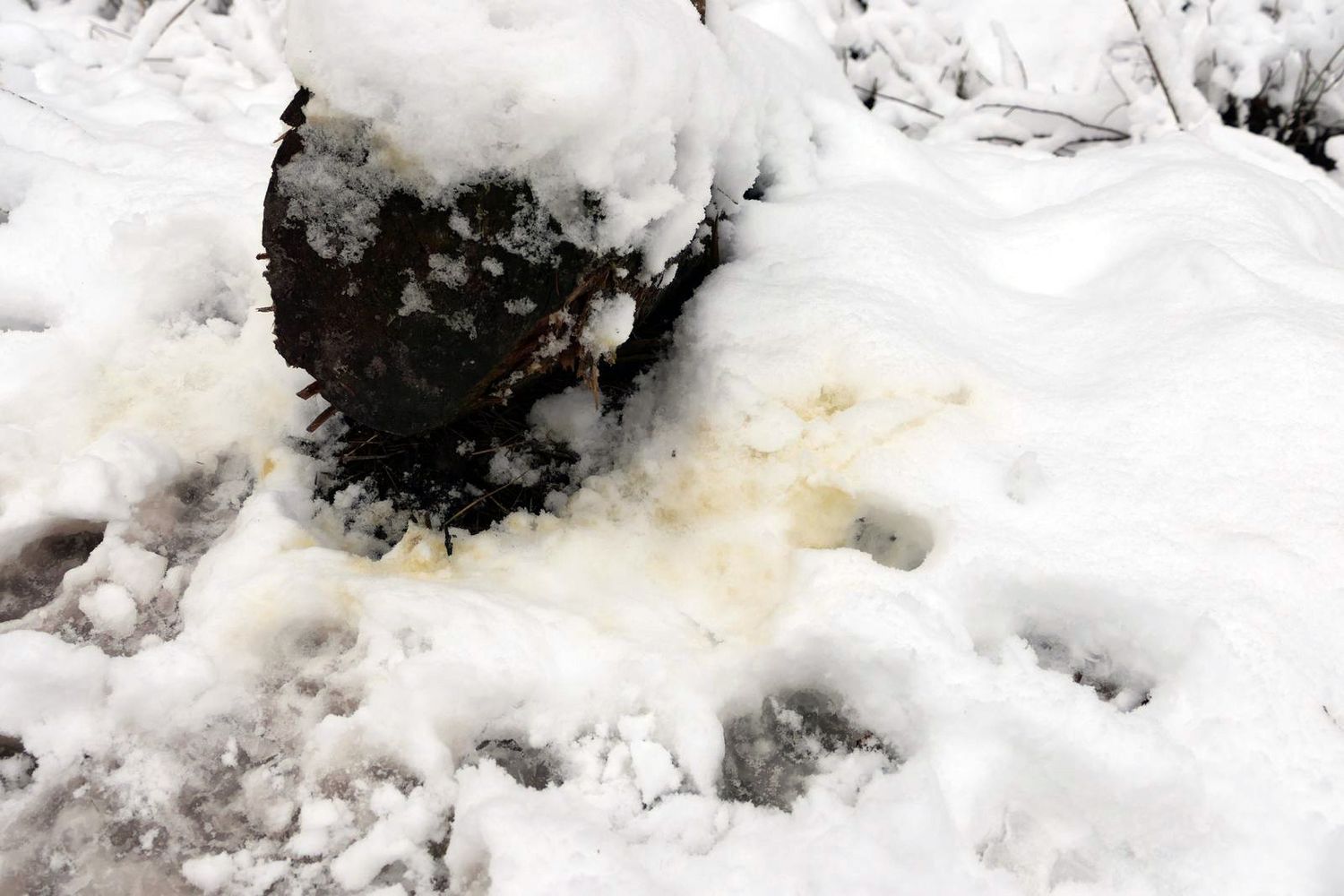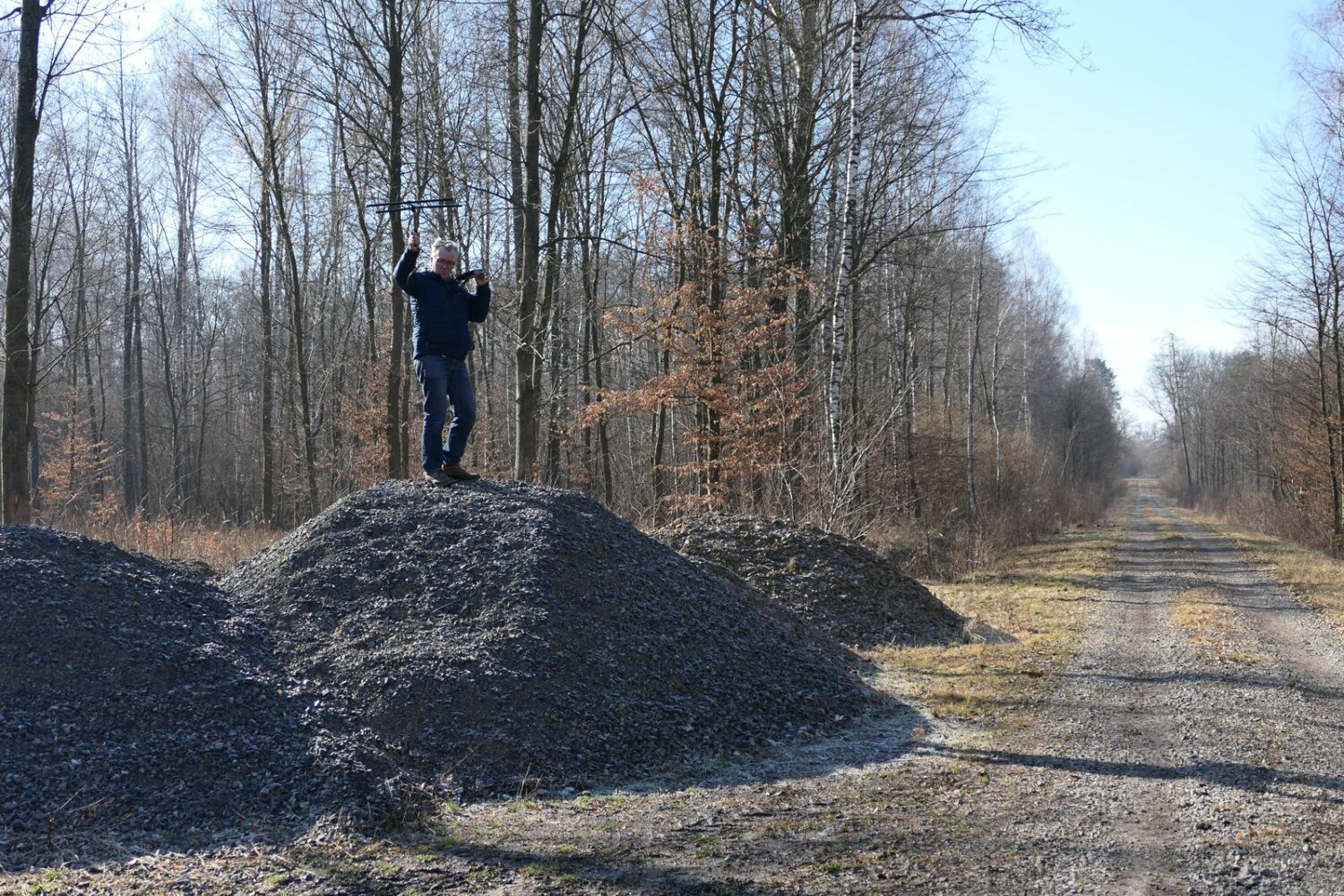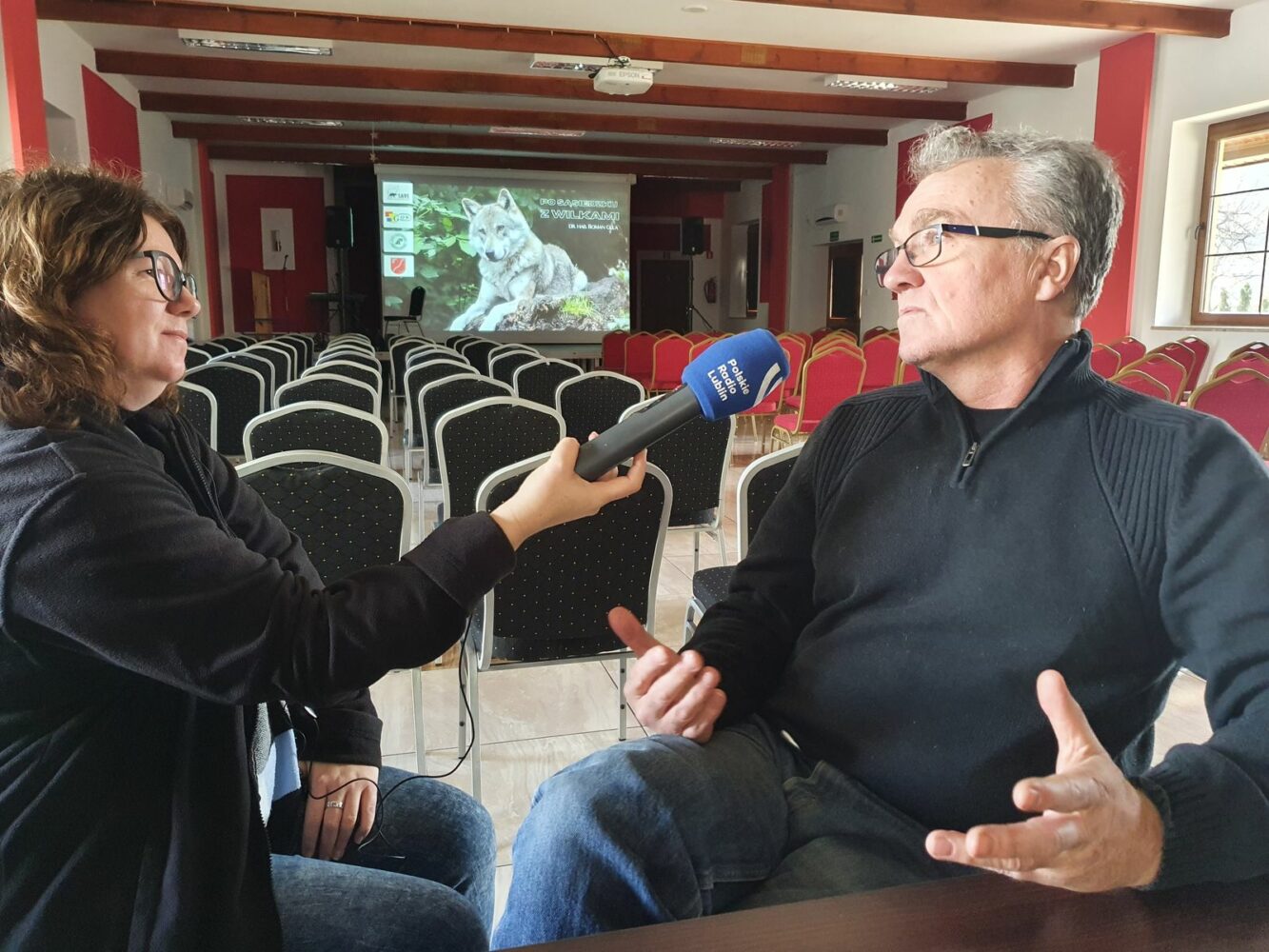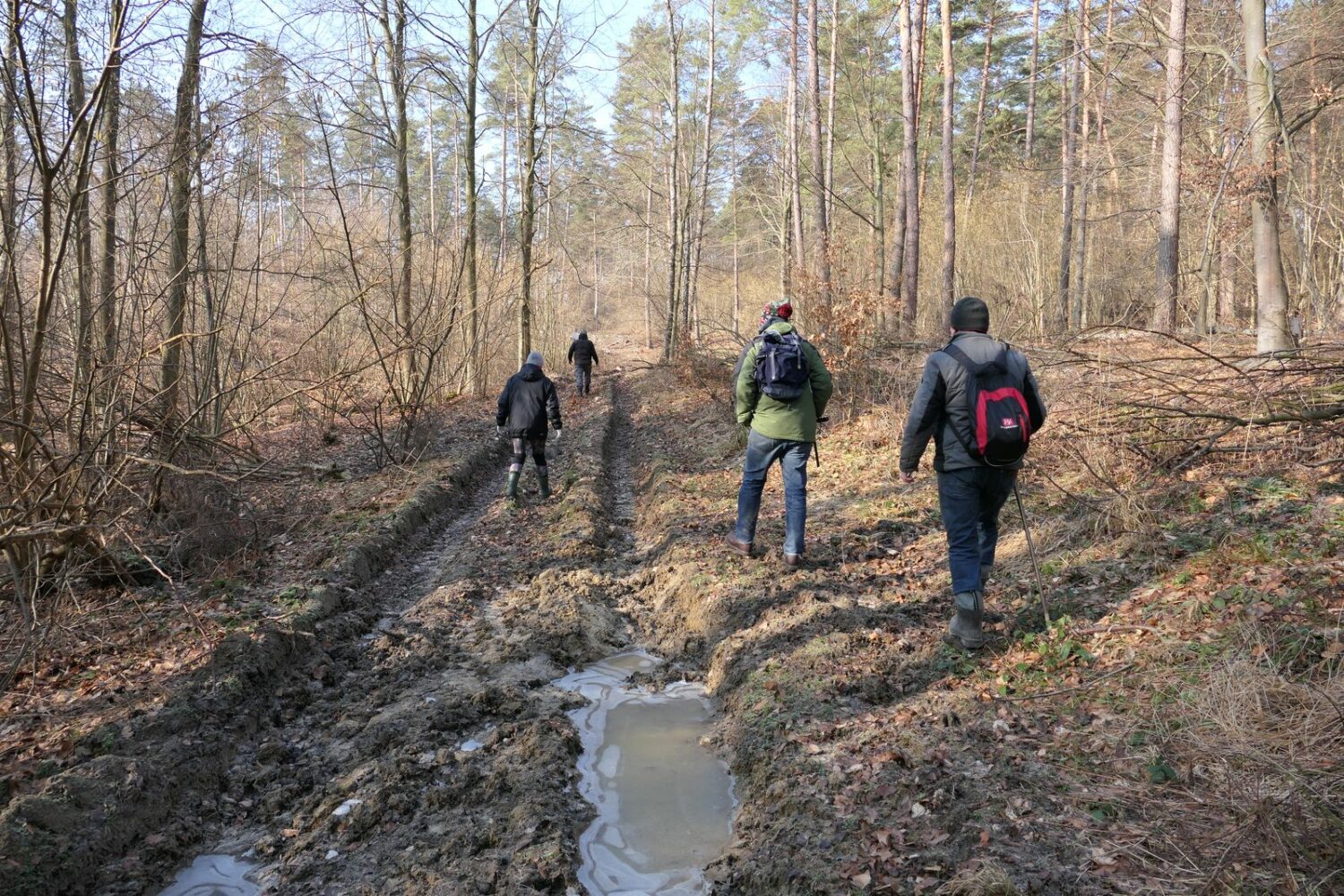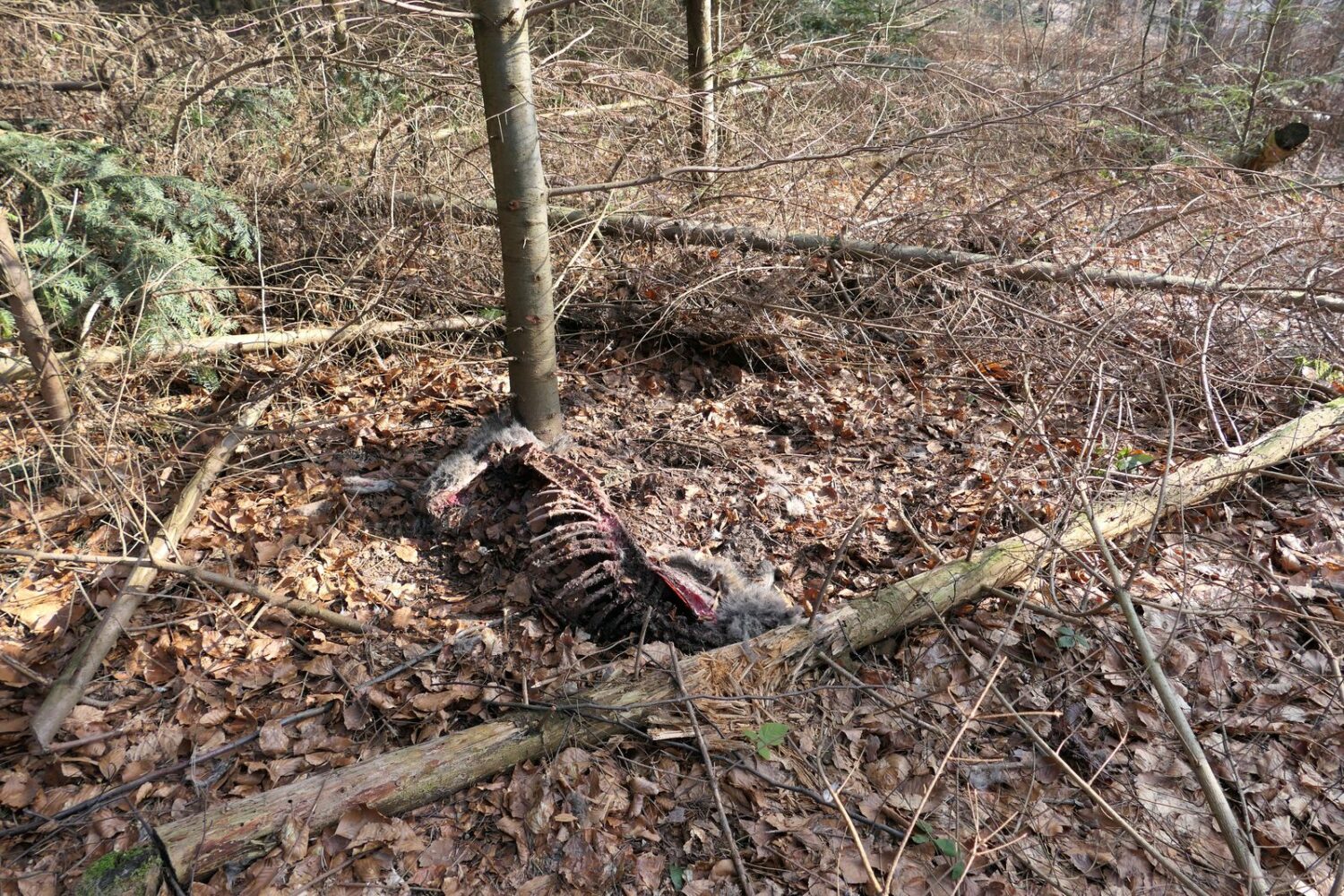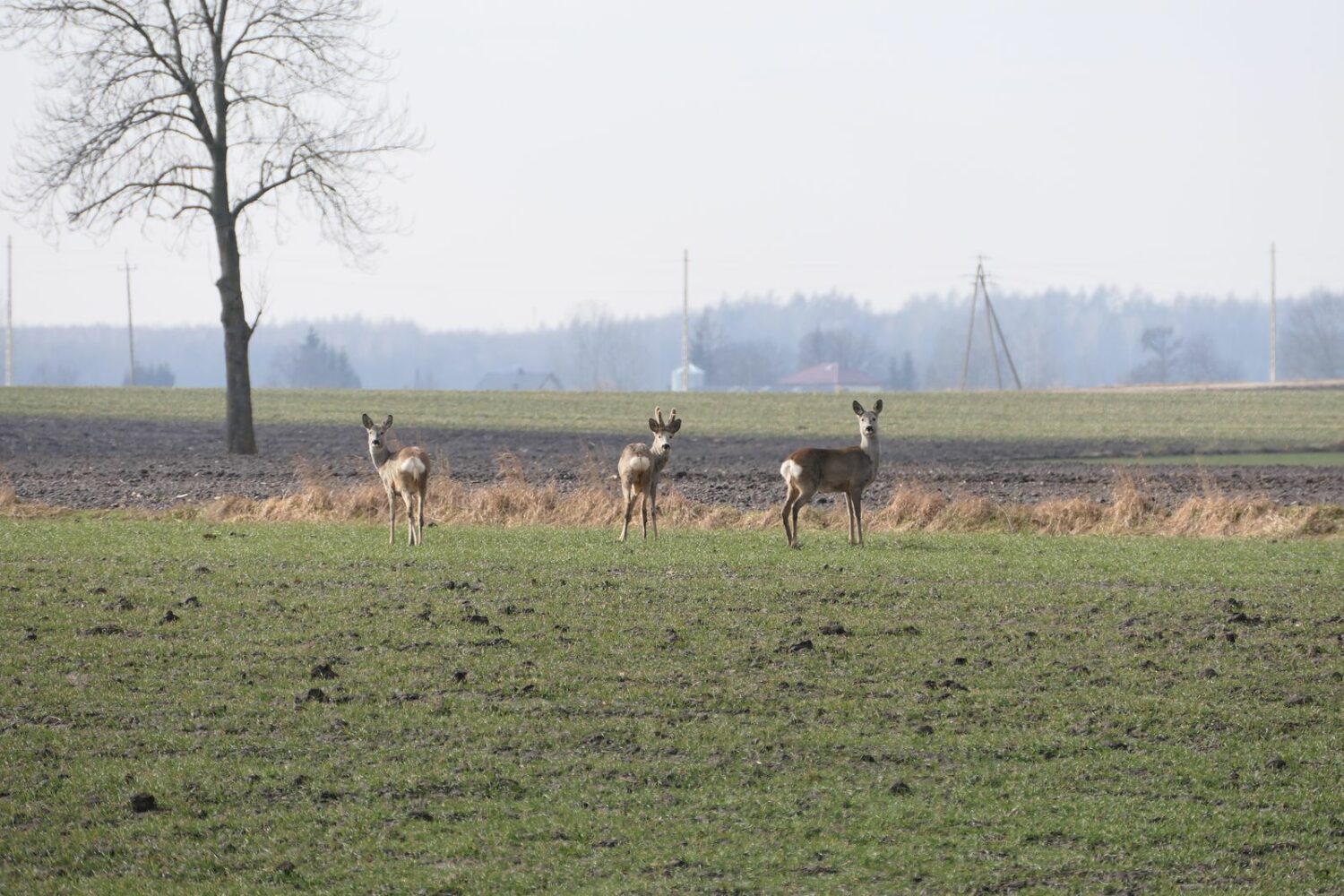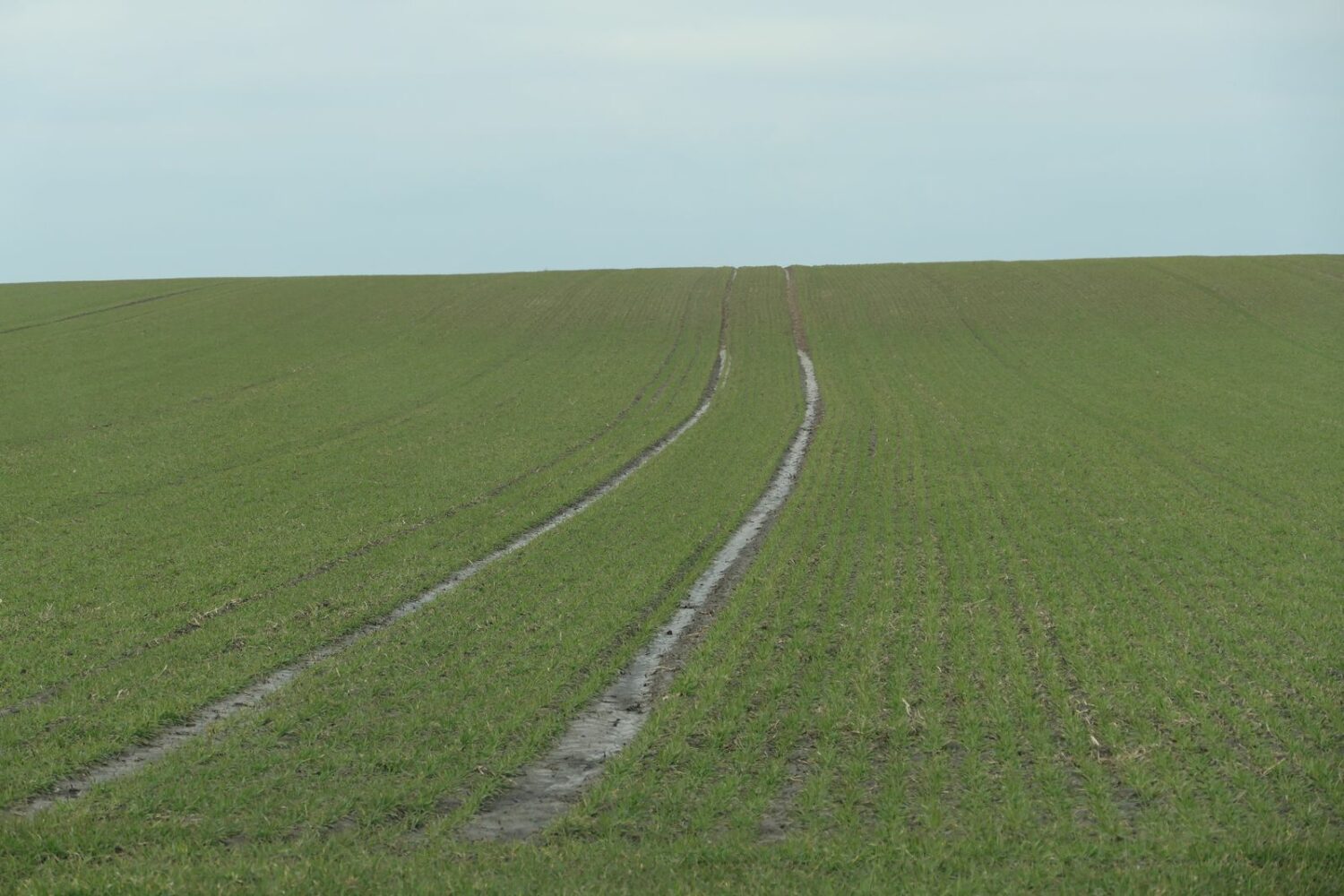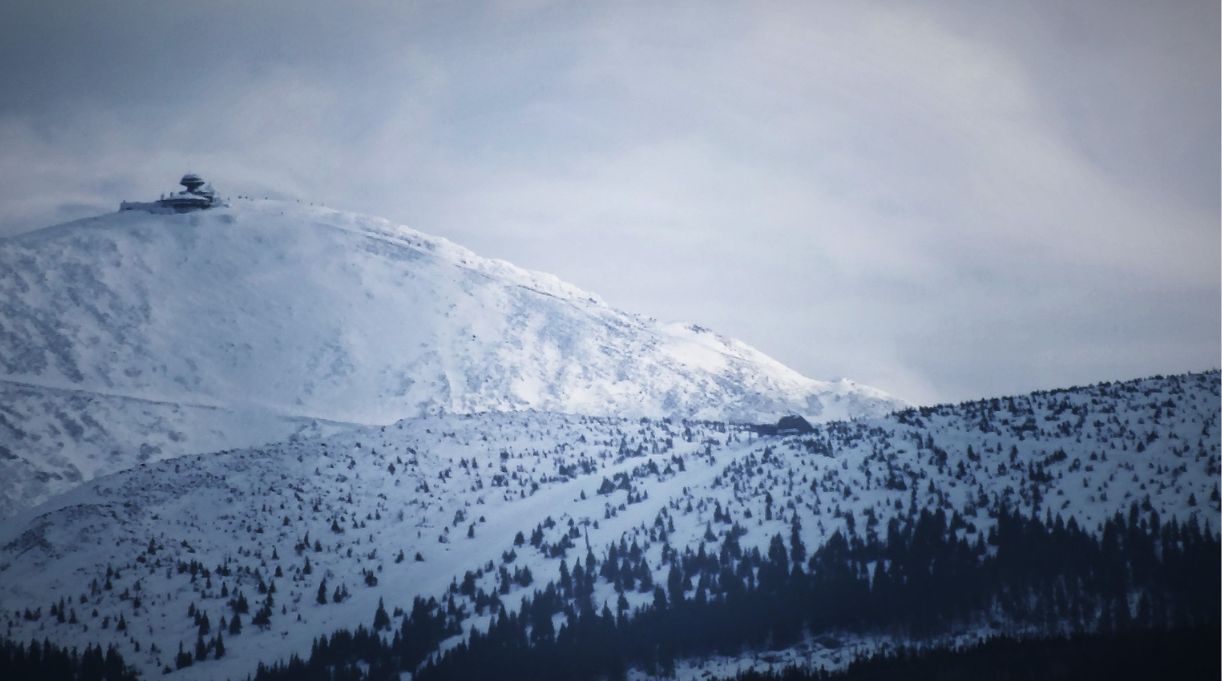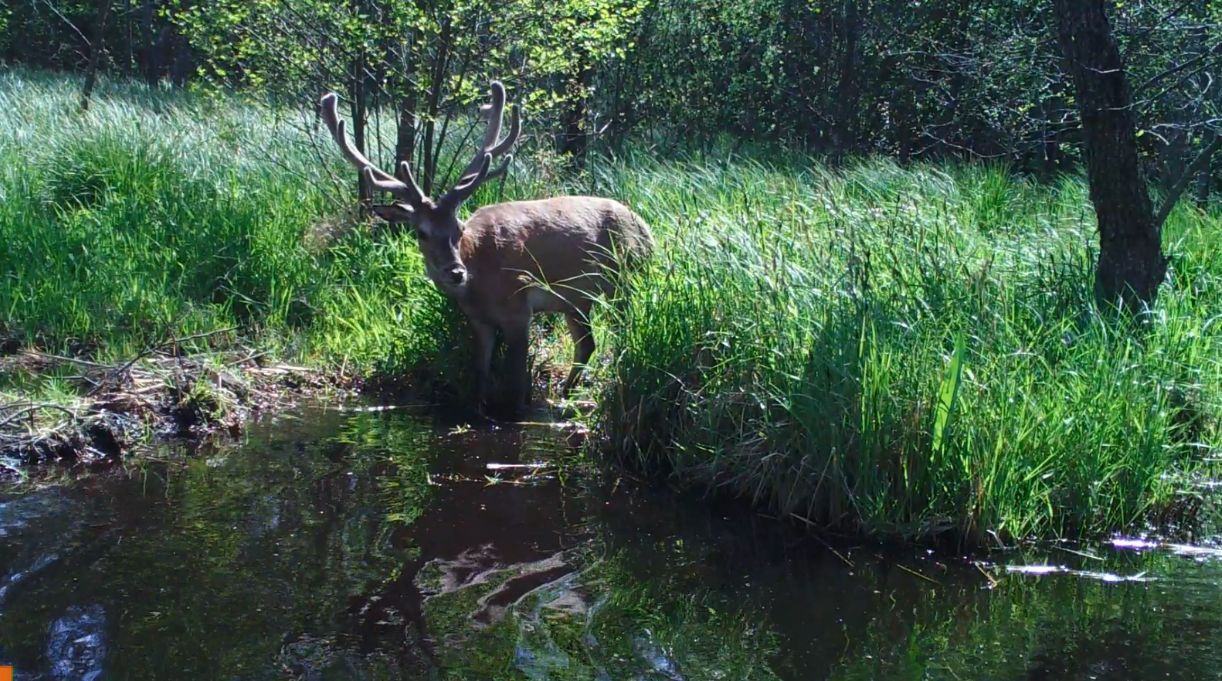Wolf families in the southern part of the Świętokrzyskie region
Wolf families in the southern part of the Świętokrzyskie region
In the summer and autumn of 2023, we searched for signs of the presence of wolf families in the southern part of the Świętokrzyskie region. From July to October, we conducted howling stimulation, recorded the presence of wolves using photo traps, and searched for tracks and droppings. Our main goal was to detect wolf reproduction in individual forest complexes.
Wolf pups are born in burrows or in lairs under uproots, overhanging conifer branches or in dense youngsters. After leaving the burrow/lair, the sub-adult pups remain in a place called the rendez-vous (“meeting place”). They are then usually under the care of at least one adult (hubby) at all times, while other adult wolves bring them food.
Rendez-vous may be changed every few days or so, but are sometimes used for a number of weeks. Sometimes these are open clearings, but most often well-hidden and inaccessible parts of the forest, such as tree heaps, youngsters or islands in swamps. In such places one can find lairs, numerous droppings, remains of prey and so-called “wolf toys” in the form of bitten bones, plastic bottles or cans. From the rendez-vous, wolf pups and their keepers often respond with howls to vocal stimulation.
We were able to ascertain the presence of the following family groups (packs):
![]() The Jędrzejów pack:
The Jędrzejów pack:
Using photo traps, we found the presence of at least 2-3 adult individuals in this complex. Despite repeated stimulation of howling, we were unable to register the presence of pups. However, we found a meeting place, probably from last year, with accumulated wolf toys – bitten plastic bottles and a motor oil container. This testifies to the presence of pups in 2022.
![]() The Szydłów pack (Chmielnik Forest District):
The Szydłów pack (Chmielnik Forest District):
Five pups and one adult responded to our howling. Wolves also reproduced in the same place in 2022, and then there were also 5 pups (note from September 20, 2022 “April pups from Chmielnik Forest District“). Noteworthy is the fact that the wolf family is reproducing in a forest complex with a very small area of only about 6 km2.
![]() The Staszów pack:
The Staszów pack:
We found the presence of 3-4 pups and one adult that responded to our howling.
![]() The Raków pack:
The Raków pack:
3-4 pups and 2 adults responded to our howling.
![]() The Łagów pack:
The Łagów pack:
Also in this complex, we found 4-5 pups and 2 adults based on the stimulation of howling.
![]() The Daleszyce pack:
The Daleszyce pack:
In summer and autumn, we observed the presence of at least 5 adults on the photo trap recordings. Neither on the recordings nor during the stimulation of howling we were unable to confirm the presence of pups. At the end of April, however, we recorded a pregnant female, which probably gave birth to pups in the immediate area.
Wolves have been breeding in the area for at least several years. In 2021, we recorded the presence of 6 pups (note dated December 20, 2021 “Wolf family from Daleszycki Forest“), and in 2022 – 8 pups (video dated November 15, 2022 “Growing up wolf pups in the Daleszycki Forest“).
The relatively high number of wolf families in the monitored area indicates the presence of quiet and hard-to-reach (to humans) breeding sites where predators can breed. Also important for wolves is the high density of ungulates in the area.
Authors: Tomasz Bracik, Mariusz Wlazło, Paweł Gola
WOLF RENDEZ-VOUS 2023
WOLF RENDEZ-VOUS 2023!
The first part of the meeting took place in the hall of the Miejskie Centrum Kultury (Municipal Cultural Center) in Skarżysko-Kamienna, where participants were able to get to know each other and give presentations they had prepared. For 4 hours we had the opportunity to learn a lot of interesting things about the observation of wolves in various regions of Poland and learn about the methods of carrying out protective, educational activities and counteracting anti-wolf propaganda.
Expedition to the Forest
In the evening, the participants of the meeting went to the nearby Świętokrzyska Forest to stimulate howling, and then to an integration campfire, during which discussions heated up on a variety of topics, from ideas on effective protection of wolf breeding sites and their habitats, through the exchange of monitoring experience to technical aspects of the equipment used.
The next day, the participants went on a several-hour walk through the most interesting corners of the Forest. Through the Dalejów Nature Reserve and areas with the most primeval character, the tour headed towards the place where wolf pups were born a year ago. Under the canopy of old trees, the guide – Roman Gula – talked about the history of the area, its natural values and the wolves that our foundation has been observing and studying here for more than a dozen years.
Goal – integration and cooperation
The meeting was held in a very positive and warm atmosphere. Its purpose was to integrate researchers and lovers of wolves, to exchange information and experience, and above all to get to know each other better and make new valuable friends. In our opinion, only through cooperation will it be possible to effectively protect nature and bring about lasting, better changes in its management. We hope that meetings under the banner of wolf rendez-vous will become a permanent and annual part of the lives of those involved in wolf monitoring and research, and will enable us to work together on a larger scale, with better and more lasting results.
Thanks to all the participants for coming and for the super interesting presentations! And to the Suchedniów Forest District for providing a picnic shelter for hosting a bonfire.
Forest workshops with the wolves!
Forest workshops with the wolves!
In May and June, our foundation is implementing its original project “Get to know the forest beyond the fence – environmental education of elementary school students”, funded by the ORLEN Foundation (a grant under the My Place on Earth program). In cooperation with the Suchedniów Forestry Commission, we organize a series of field workshops for children in the most beautiful corners of the Świętokrzyska Forest, preceded by wolf lessons at school.
As part of the project, each participating class takes part in one lesson about the forest and its inhabitants. During the meeting, the head of the wolf project, Roman Gula, introduces the children to the forest theme, showing the most interesting photos and recordings from our project. He tells about wolves and other animals that live in our neighborhood, and what to do in case of encountering them.
The next stage is a field trip to the vicinity of Świnia Góra and the Dalejów Nature Reserve, led by our naturalists headed by Roman Gula and Jacek Major, with the steadfast support of Ms. Ania Wojkowska-Klata from the Suchedniów Forest District. During the approximately 2-3 hour walk, kids and their teachers get to know the forest and learn how to behave properly in it. How to distinguish a spruce from a fir? What creatures can be found in a forest puddle? Who leaves five-fingered tracks? Children learn about the dangers of trash abandoned in the forest, and collect it in a bag carried by caregivers. By the end of the first walk, the bag was almost full of trash found along the way!
A few words about wolves
The forest workshop is also an opportunity to learn a lot of interesting information about wolves, which our foundation has been studying in the Świętokrzyska Forest region for many years. Finding wolf poop is an opportunity to talk about what wolves feed on and show children what the work of a field biologist looks like. Students have the opportunity to identify and tag the droppings themselves, while learning how to use a GPS, and also try their hand at tracking a live wolf using a telemetry antenna!
At the end of the field part, a bonfire awaits the participants in the Forestry Classroom of the Suchedniów Forest District, where, in the shade of the trees surrounding this charming place, kids have the opportunity to roast various delicacies on the fire and rest after the walk.
At the end
So far, we have already held several lessons and workshops to which we took students and teachers from Elementary School No. 3 in Suchedniów, and we are slowly completing the project. During the forest walks we were fortunate with the weather, which was warm and sunny, and all the participating classes bravely overcame the beautiful, but at the same time sometimes difficult and marshy terrain, absorbing knowledge about nature and ecology.
Without you, we would not have succeeded!
- Thank you very much to the Suchedniów Forest District for supporting our activities and providing access to the Forest Classroom, and especially to Forest Supervisor Piotr Fitas and Ms. Anna Wojkowska-Klata, education specialist, who persistently supported us during most of the workshops and shared her knowledge of forestry with the children. Thank you and we look forward to further joint projects!
- We would also like to thank Ms. Renata Wikło, deputy director of the Stefan Żeromski Elementary School No. 3 in Suchedniów, for excellent cooperation in the implementation of lessons and workshops for school students!
- And finally, we would like to thank the ORLEN Foundation, without which the project would not exist at all! We are grateful for selecting our idea from among many others and granting us the funds necessary to implement it.
Author: Joanna
Wolves from Augustowska Forest
Wolves from Augustowska Forest
Wolves from the Augustów area recorded on our photo trap.
In appearance, perhaps a little different from the świetokrzyskie wolves, but from behavior just as dog-like. Drinking water from the river, rolling in a dead fish, a quick pee, sniffing and whoring the camera…. These and other behaviors were recorded on our photo trap.
Meet the wolf family from the Augustowska Forest!
* The footage was recorded in November 2022 in the Płaska forest district, Augustów.
Author: Joanna
Spring in the Świętokrzyska Forest!
Spring in the Świętokrzyska Forest!
We are still continuing counts of forest ungulates until mid-May as part of our wolf diet research project.
On the occasion of field work, we visit extremely beautiful, wild and mysterious parts of the Forest, inhabited by a variety of creatures. Deer, frogs, newts, nuthatches…. Plus charming honeysuckles and hellebores, cheering up the undergrowth with their purple flowers.
📸 See what springtime Świętokrzyska Forest looks like in the lens of our talented volunteer Bartosz Sarnowski!
The field research is coming to an end soon, but we wouldn’t have been able to complete it on time if it weren’t for the support of our persistent volunteers and donors.
- Many thanks to Mr. Marcin and the company Lanius-Books (lanius-books.com), which offers a variety of great equipment and accessories for nature lovers, for donating the Wilsus Accento photo trap. The camera is hanging in the wilderness and collecting material for us – in a few weeks we will see the first results!
- We would also like to thank the Esperanza company (esperanza.pl), and in particular Mr. Adam, for supporting us with a pack of colorful rechargeable batteries they produce, which are also already working in the field and powering our photo traps. So far both the camera and the rechargeable batteries are working great.
Thank you!
—
Our Foundation is still looking for sponsors for the equipment we need (photo traps, SD cards, external drive, tablet, GPS, walkie-talkies, field clothes) – if you want to help us, let us know at kontakt@fundacja-save.pl We look forward to hearing from you!
"Human-Wildlife Conflict and Coexistence" conference
"Human-Wildlife Conflict and Coexistence" conference in Oxford, UK
HUMAN-WILDLIFE CONFLICT & COEXISTENCE CONFERENCE – Oxford 30.03.-1.04.2023
On 30.03-1.04 we had the pleasure of attending an international conference on human-wildlife conflicts, organized by the IUCN (International Union for Conservation of Nature), the oldest international organization focusing on conservation issues.
The conference, attended by nearly 600 researchers, scientists and conservationists from around the world, was held in the beautiful English university town of Oxford.
Dozens of delegates from around the world spoke during the three-day meeting. A wide range of problems and methods of solving them were addressed, and the topics crossed almost every continent of the planet. From tigers in Indonesia, to lions and caracals in Namibia, elephants in Botswana, wolves and bears in Romania, to jaguars and gwanacos in South America. Conflict management methods, principles of effective education and the best techniques for working with local communities based on respect and understanding of needs were discussed. Among the speakers we had the opportunity to see many world-renowned scientists, such as wolf experts John Linnell and Luigi Boitani!
However, the conference was not only about lectures, but also, and perhaps most importantly, about meeting other participants and exchanging experiences. We had the opportunity to meet wolf researchers from other countries and hear about the latest ideas for new, innovative research, or lesser-known methods of resolving wolf-breeding conflicts.
Some of the lectures were recorded and are available on the organizer’s YouTube channel https://www.youtube.com/channel/UCkP5dWpe7Mdu-D7prR7MeNQ.
Author: Joanna
Breakfast at Bartek's family
Breakfast at Bartek's family
What is the wolf family from the Niekłańskie Forests doing? A few weeks ago, when it snowed a bit, we were able to track it down.
We followed the trail of 5 wolves! We quickly came across remnants of their meal. The wolves hunted and ate the deer, of which all that was left was the stomach and some hair. After breakfast, the wolves intensively marked the area.
The family, founded 2 years ago by our collared Bartek, includes, among others, Trip, a three-legged wolf, which we recently wrote about – link. Trip’s tracks stood out among the wolf paw prints we found – the trace of Trip’s only surviving hind leg never, even when the wolf was trotting, overlapped (as in 4-legged wolves) the track of the fore paw.
Author: Roman Gula
In search of Geralt the wolf
In search of Geralt the wolf
In late February and early March, we headed east in search of Geralt the wolf, whose GPS collar stopped sending location data at the end of January.
We recently decided to once again search the area around Geralt’s last locations in the Hrubieszow area (above. Mircze) near Poland’s eastern border with Ukraine. As we wrote earlier, the collar data indicated that Geralt was either dead or that the collar had fallen off him. We searched the area thoroughly for several days, hoping to at least find the collar. Unfortunately, without success.
During the search, we received information about a dead wolf, without a collar, found near Hrebenne (70km further south). We went to the place and the finders, who turned out to be antler collectors (many thanks for their involvement, help and time!), who quickly and efficiently led us to the remains. Unfortunately, in the meantime, someone had cut off the dead wolf’s skull (we remind you that it is illegal to possess parts of protected animals!). It was therefore impossible to assess the age of the wolf, and the feeding of mammals and birds on the carcass made it impossible to determine the sex. There wasn’t much left of the wolf, but fortunately it was possible to collect a sample for genetic testing. After comparing this wolf’s DNA with Geralt’s genetic profile, we will find out if this was our missing wolf.
We decided to combine our stay in Zamość with our educational campaign. We met with employees of the Mircze Forest District and school children. A very interesting experience for us was a meeting organized by the Polish Hunting Association and the Zamość Academy. In the unique atmosphere of Zamość’s old town, we tried to introduce the audience to the biology of wolves and show that wolves are not scary beasts lurking in our lives. Interestingly, after our factual lecture and discussions about wolf numbers, the listeners agreed that the information appearing here and there about wolf densities reaching 40 individuals/km2 comes from the world of fairy tales!
On the occasion of public meetings with residents, we gave several interviews to local media, including Radio ESKA, Tygodnik Zamojski, Kronika Tygodnia and TVP3 Lublin. We hope that the news about Geralt and his disappearance will spread and give us answers as to what happened to him. In addition, we tried to allay viewers’ doubts about living in the vicinity of wolves and explain that the predators seen in the area do not pose a threat to them.
Although the trip in search of Geralt was fruitful in several respects, unfortunately it did not end with the unraveling of the mystery of our wolf’s disappearance. Nor did we find the collar, which is valuable to us for two reasons. First, it contains data that can only be recovered by connecting the collar directly to a computer. And second, we could reuse it to monitor the life of another wolf. We therefore appeal to anyone who comes across information about a wolf with a collar or the collar itself to contact our Foundation. We offer a reward for finding one!
* Geralt is a wolf native to the Świetokrzyska Forest, who, in search of a mate and a place to live, migrated to Ukraine and then settled in the Lublin Province. He wore a GPS collar transmitting location data to us, which was funded by Vanity Style.
Author: Roman Gula
Vlk Gagat returned to the Sudetes
Vlk Gagat returned to the Sudetes
After two months in the Žďárské vrchy, Gagat returned to the Sudetes.
As we wrote previously, the tracks of our Czech colleagues from the Hnutí DUHA Šelmy organisation indicated, that Gagat was alone. He may therefore have returned to the Sudetes in search of the partner.
This is the last chance for Gagat this year. The oestrus in wolves falls in the second half of February and is already coming to an end. Reproductive wolf families are recorded in the Sudetes, so perhaps Gagat is hoping that there is a better chance of meeting a mate in this region. However, being in the families’ territories comes with risks. Wolves are sometimes aggressive towards strangers, and sometimes such clashes end in the death of lone individuals.
Author: Roman Gula
The most interesting animal shots - Daleszyce Forests 2022
The most interesting animal shots - Daleszyce Forests 2022
The most interesting animal shots recorded in the Daleszyce Forests in 2022.
The Daleszyce forests are among the most valuable natural areas of the Świętokrzyskie region. The diversity of habitats – dry coniferous forests, alder forests and peat bogs, upland and mountain forests – means that the diversity of animal species is high. In addition to common species, rare and endangered species are also found.
By carrying out permanent monitoring of wolves in the Daleszyce Forests, we were able to record with photo traps many interesting animal behaviours during the four seasons of 2022.
SPRING
In spring, foraging male deer and elk were most frequently recorded. Young specimens still wore complete antlers, while older bulls already showed newly applied antlers covered with scutes. We often recorded deer and wild boar during mud baths, which protect them from skin parasites. Photo-traps also recorded wild boars with small piglets that were born in early spring. Wolves in spring were recorded infrequently, usually while patrolling the area.
SUMMER
In summer, photo-traps recorded female deer and roe deer with young (calves and kids) and wild boars with sub-adult offspring. Bulls of deer and elk carried already grown antlers, which in late summer begin to wipe off their scutes. The wolf family reared as many as 8 pups, with which they moved between several rendez-vous (meeting places) located in the same area. The beavers also reared their offspring, and a pair of cranes from the moor cared for two chicks. Due to the prevailing summer heat, water and mud baths of the animals in the beaver floodplains and forest wallows were a common sight.
AUTUMN
Autumn is primarily the mating season for elk (bucking) and deer (roaring). Cameras repeatedly recorded the mating behaviour of males with magnificent antlers. Wolf pups were not much smaller than adult wolves and often roamed together with their parents and older siblings. Ungulate mammals continued to enjoy mud baths. Autumn was also the time for larger groups to form, especially in wild boar and deer.
WINTER
Winter is the season of further wolf migration, during which time smaller groups of wolves, or even individuals, patrol remote corners of their territory. The end of winter is also the period of mating for wolves and the greater mobility associated with this. Animals at this time rarely take mud baths or completely resigns from them.
Author: Tomasz Bracik


